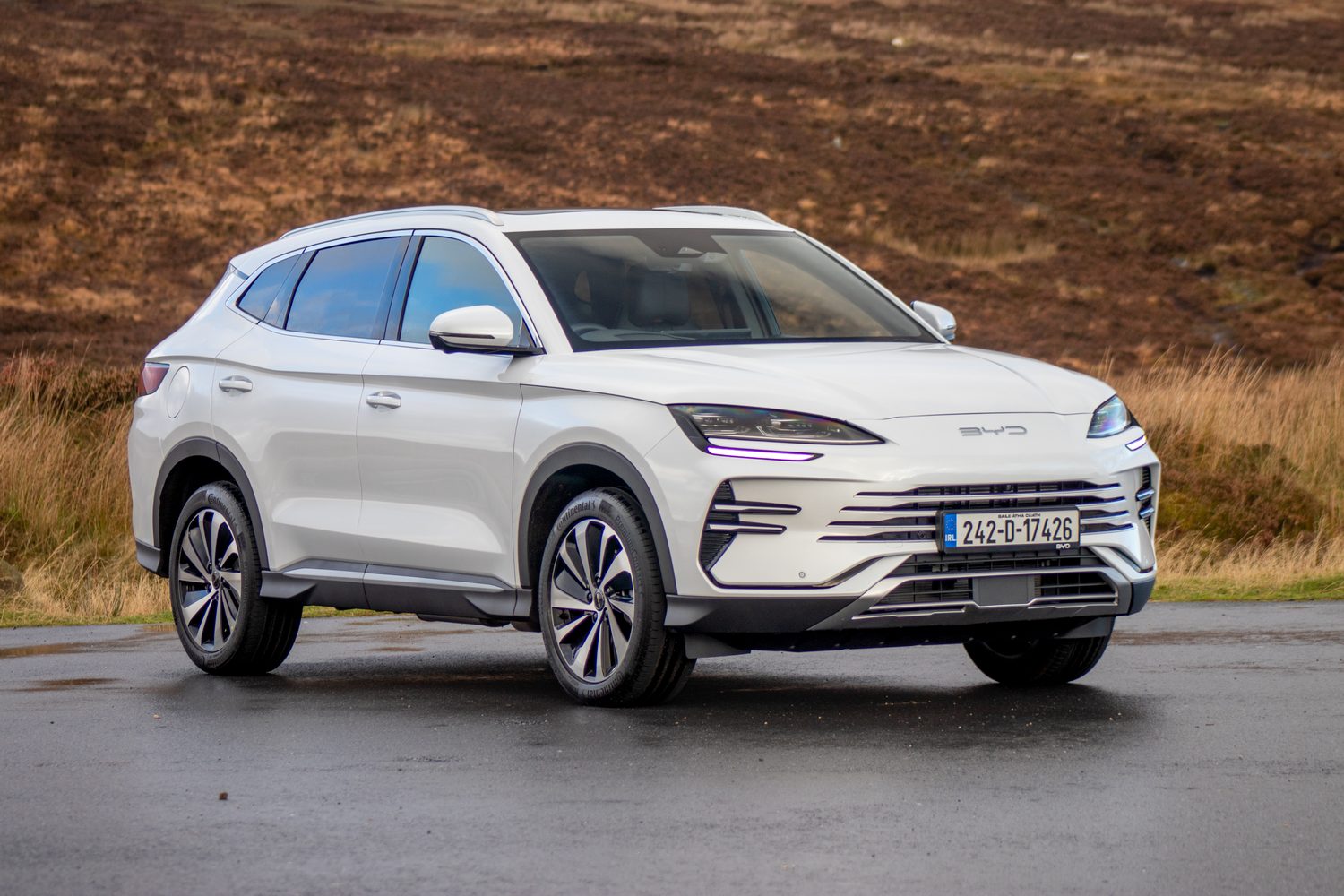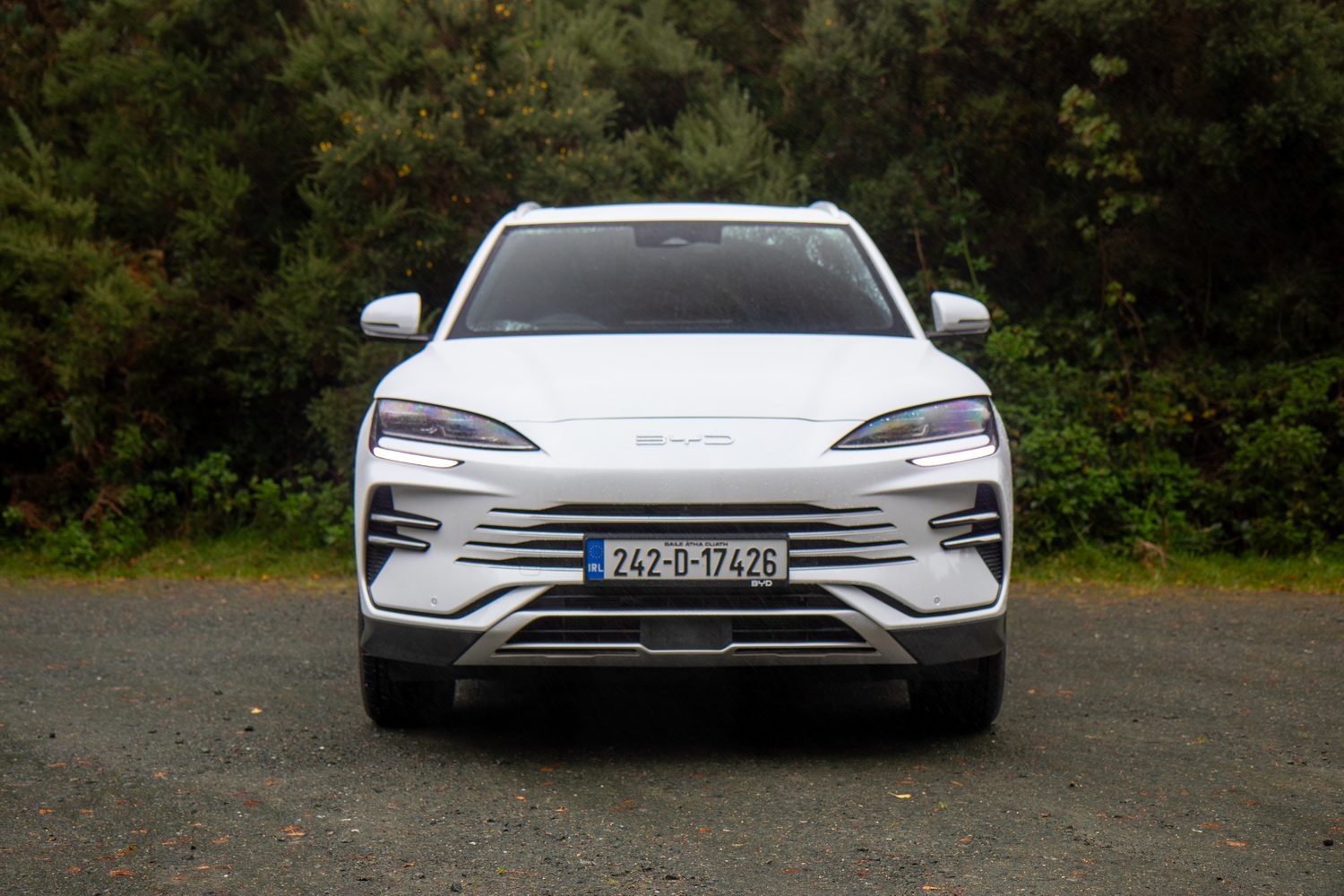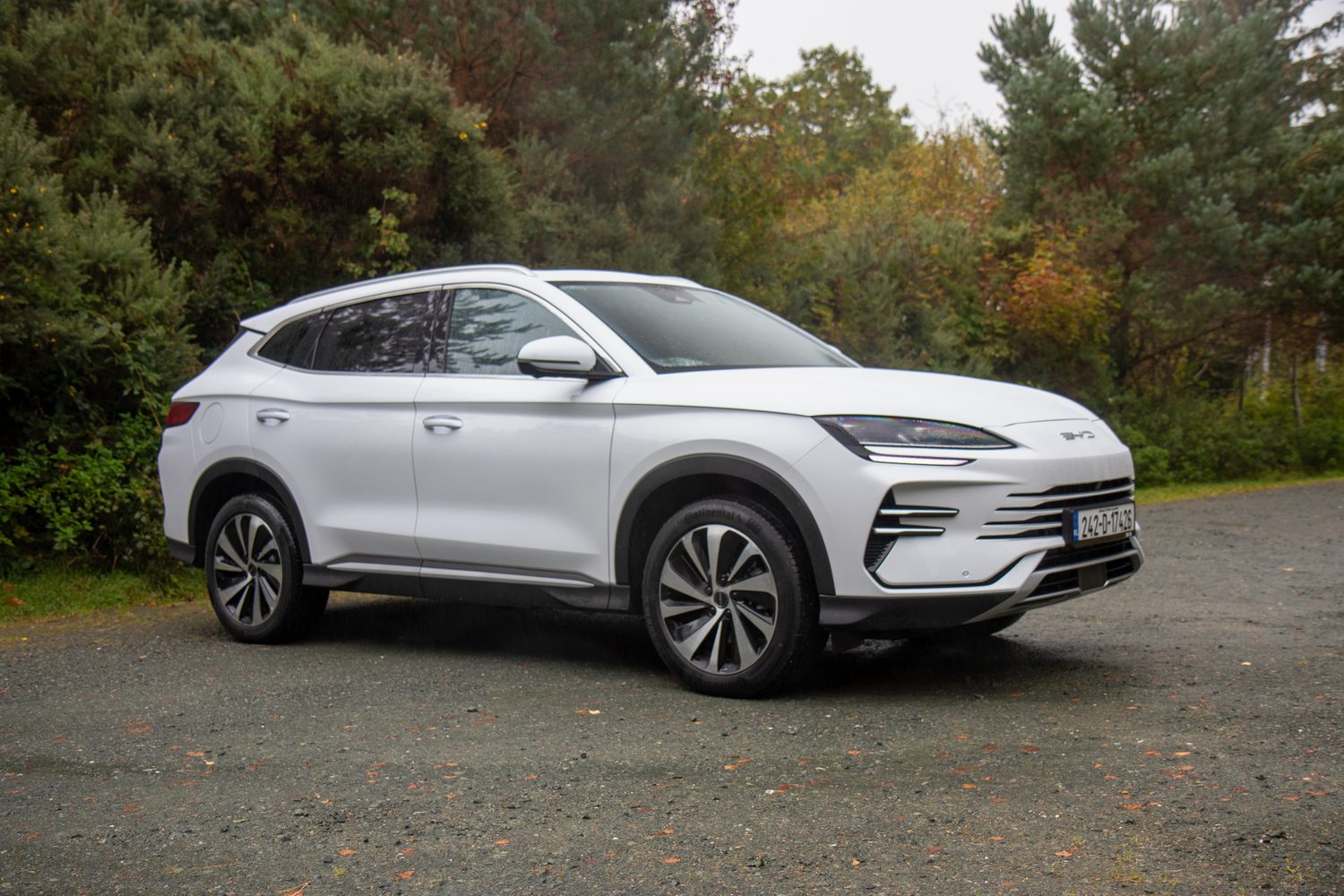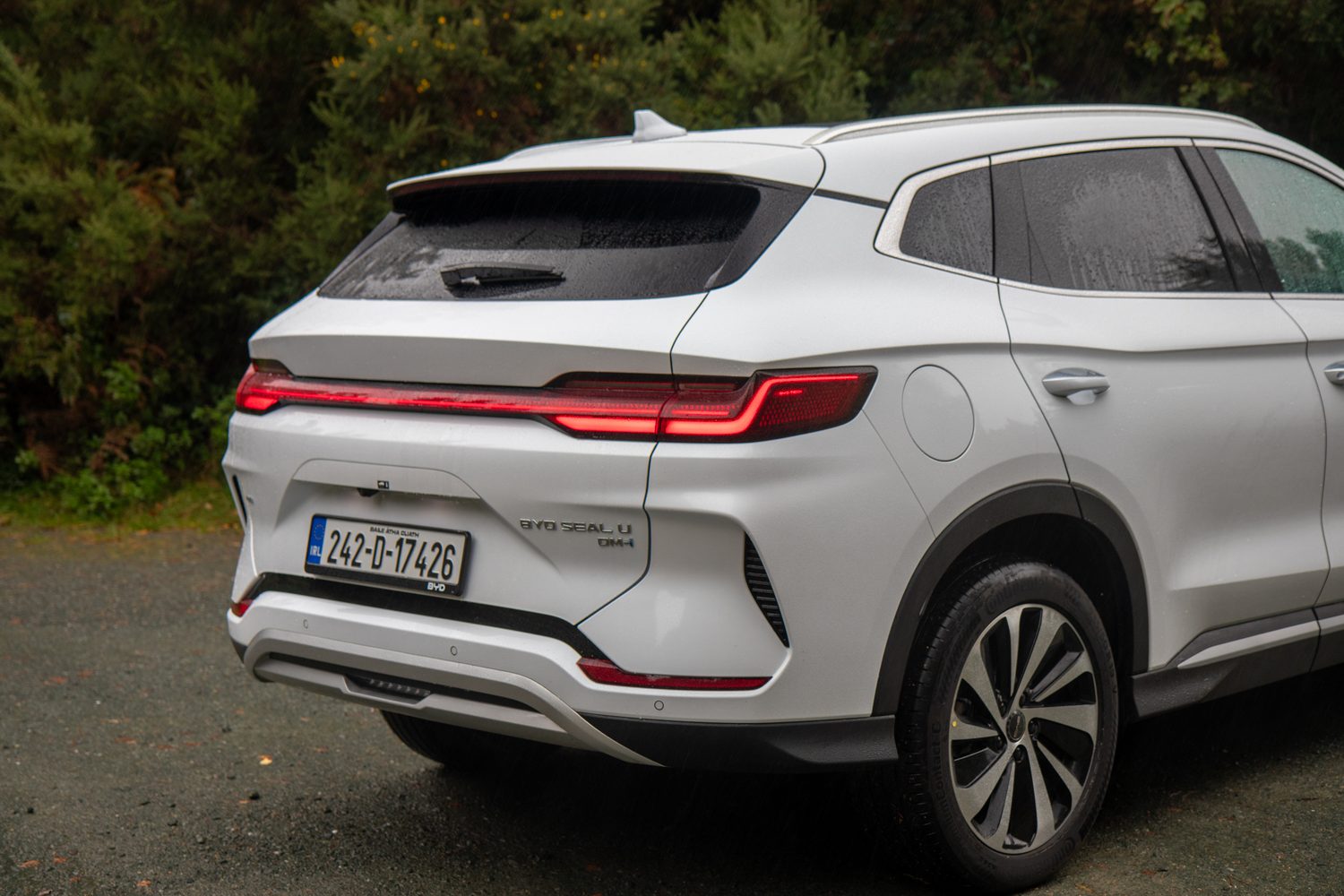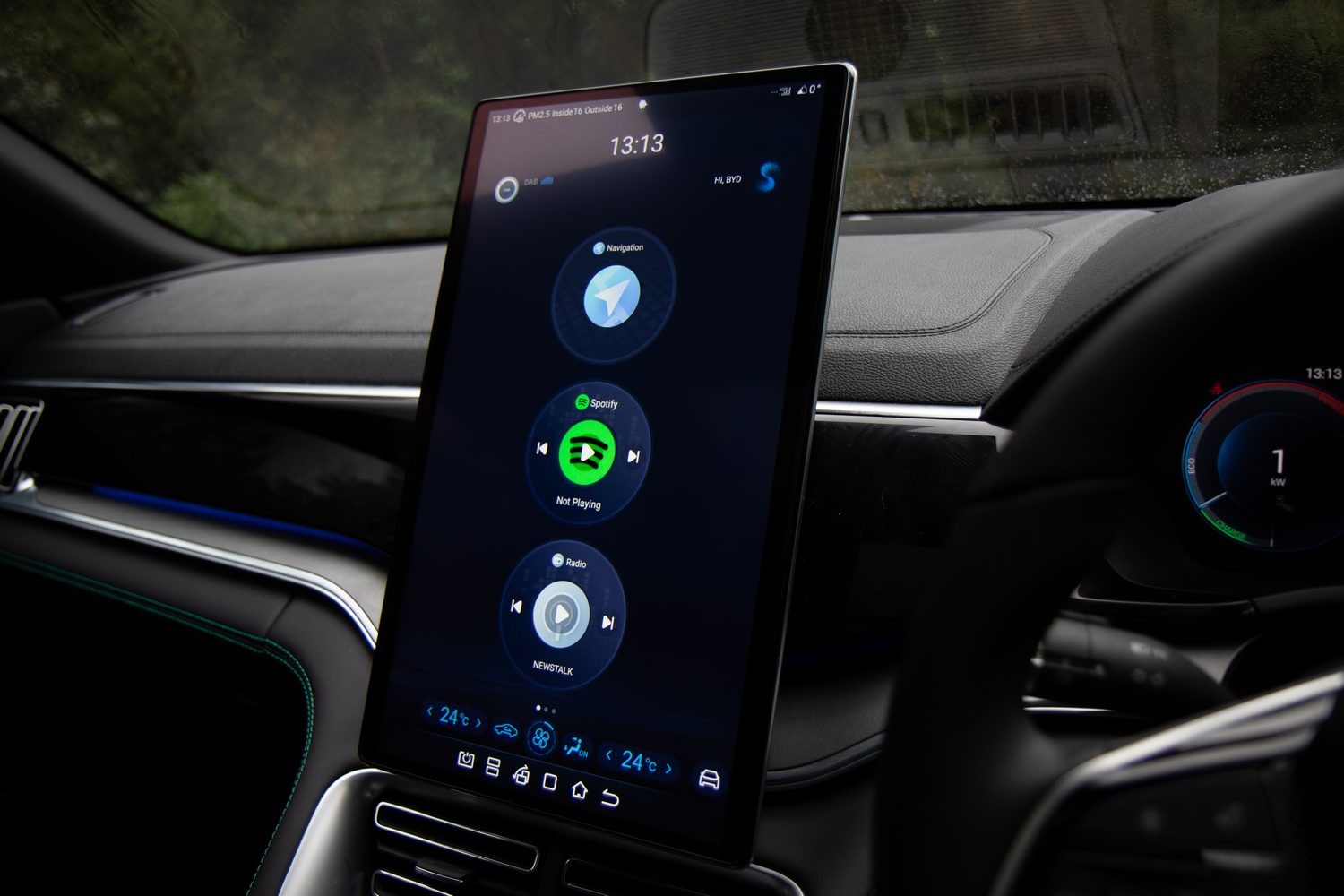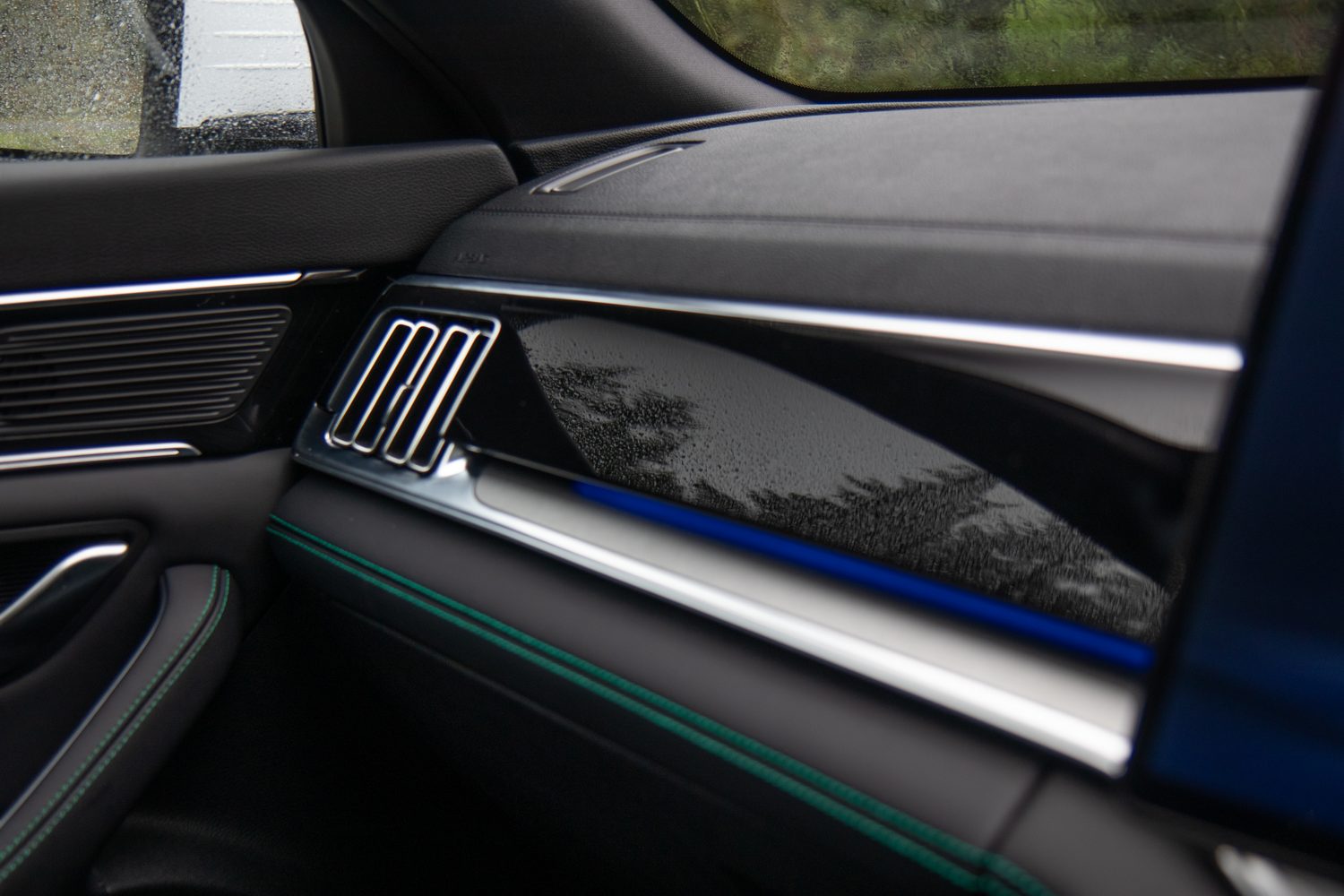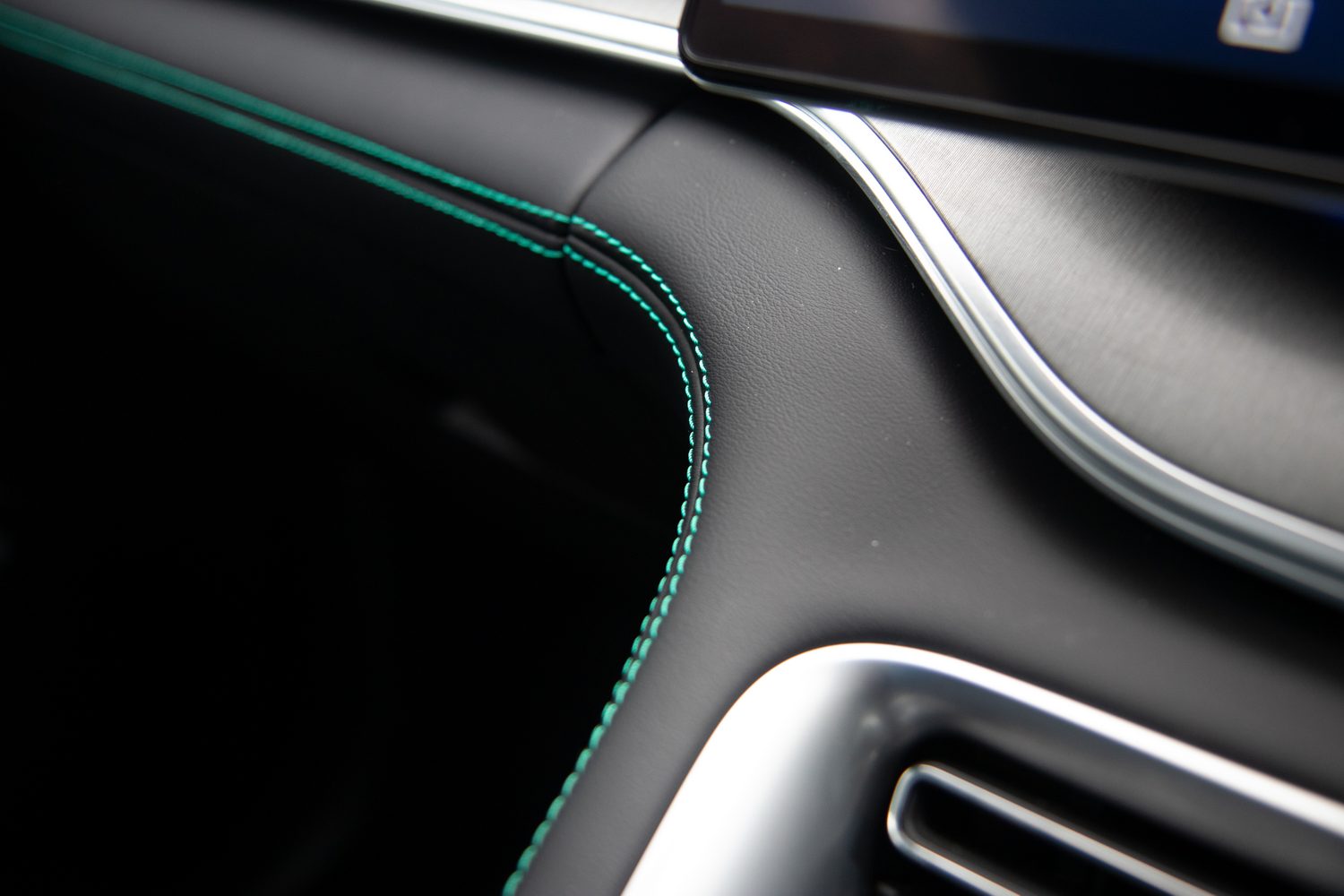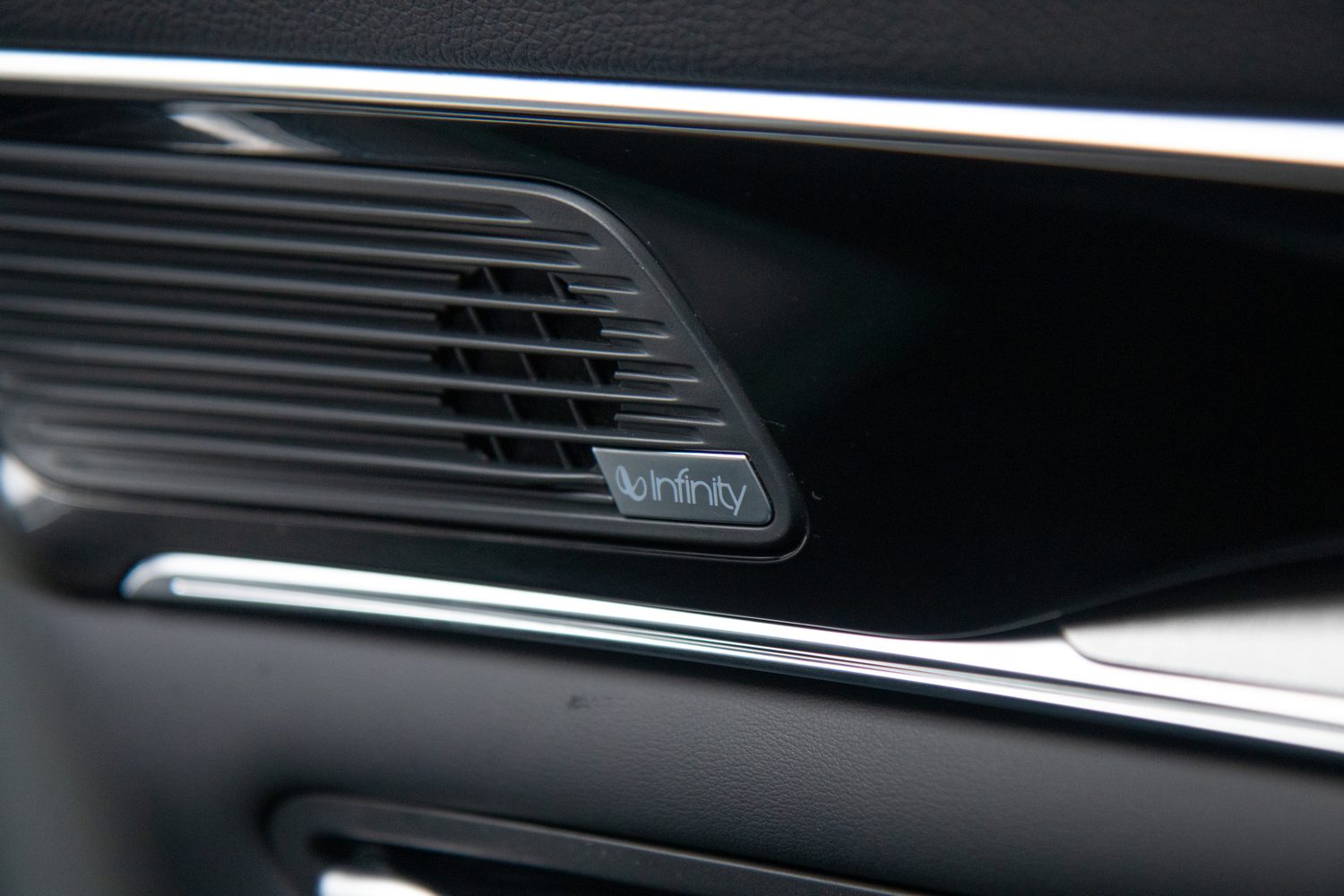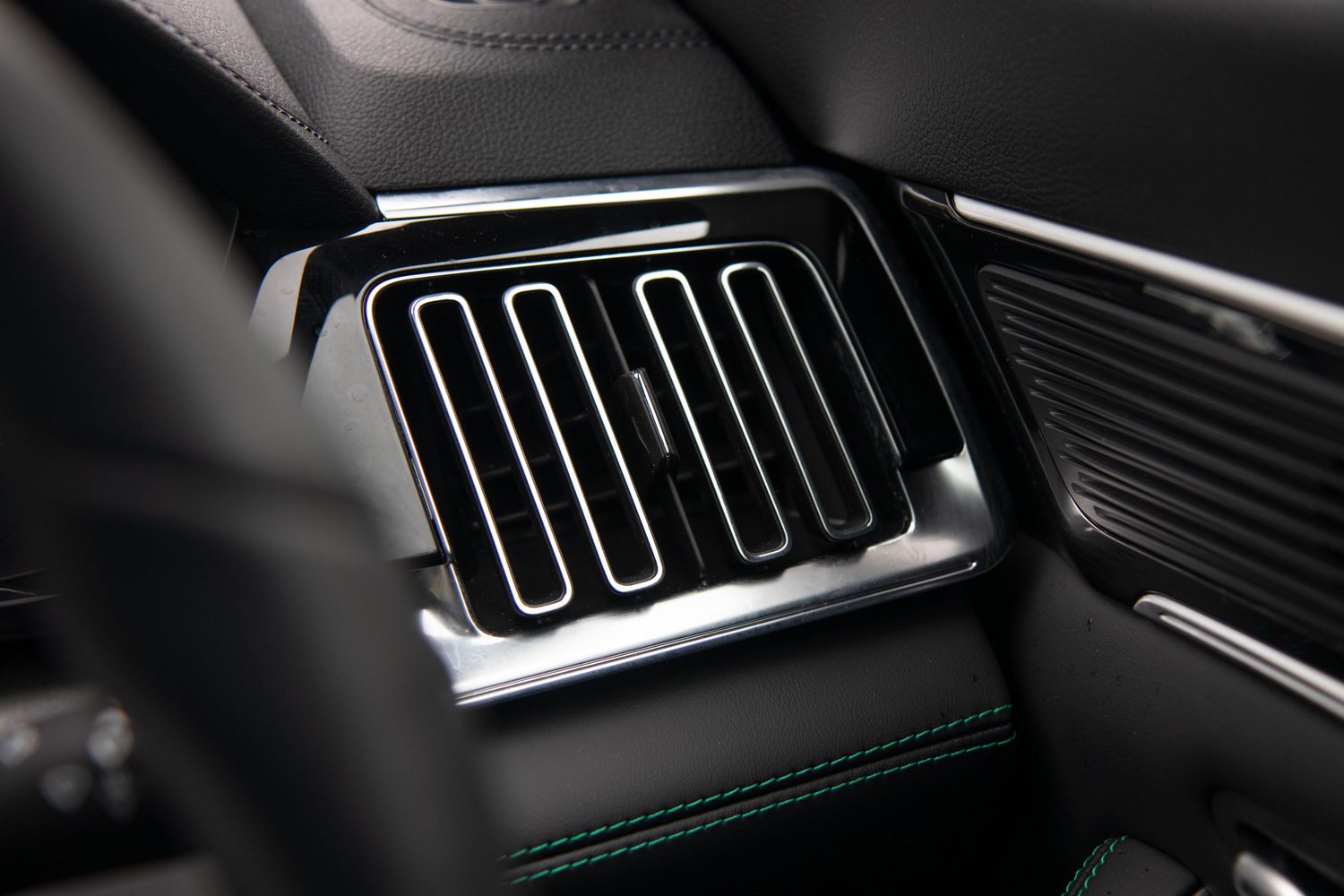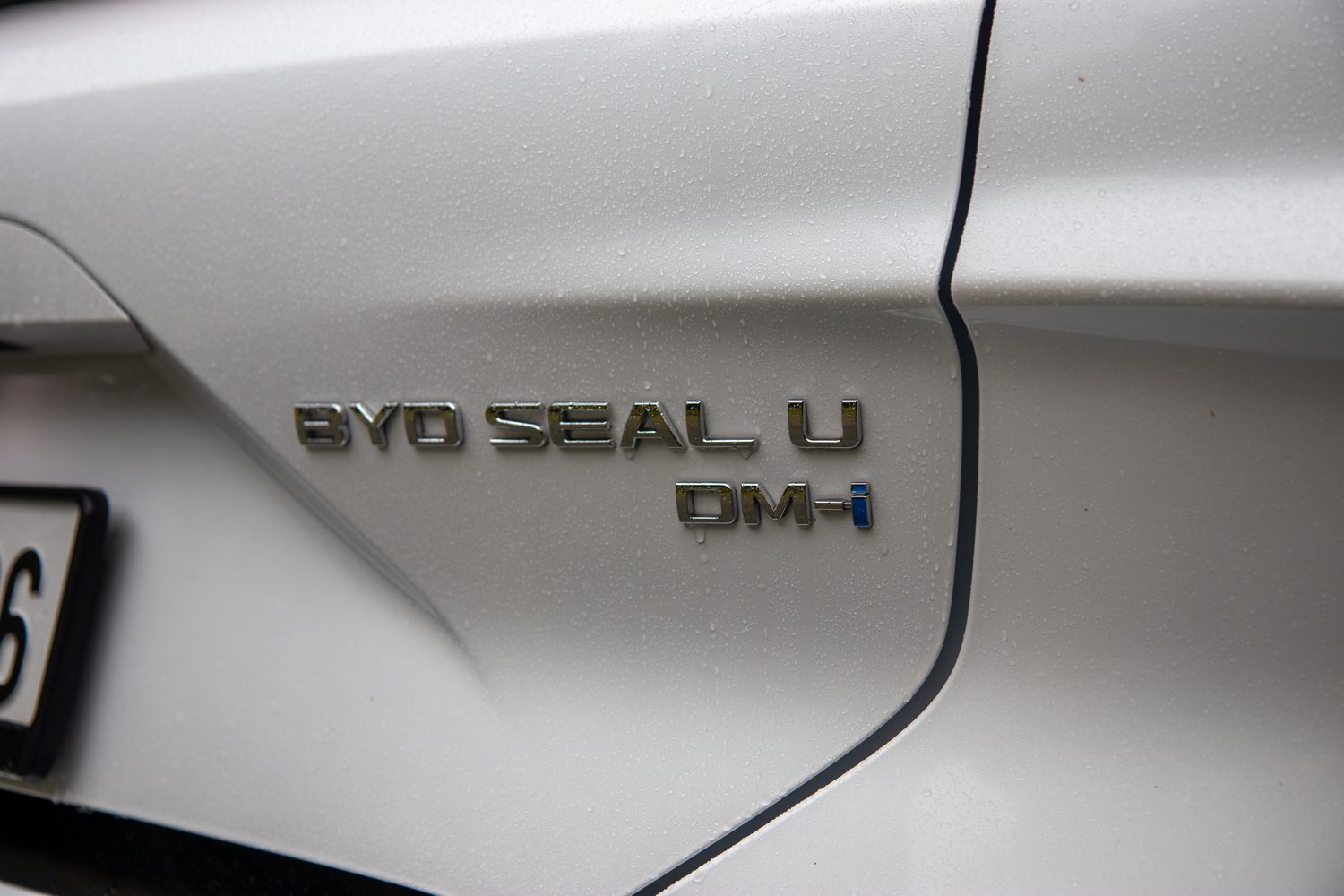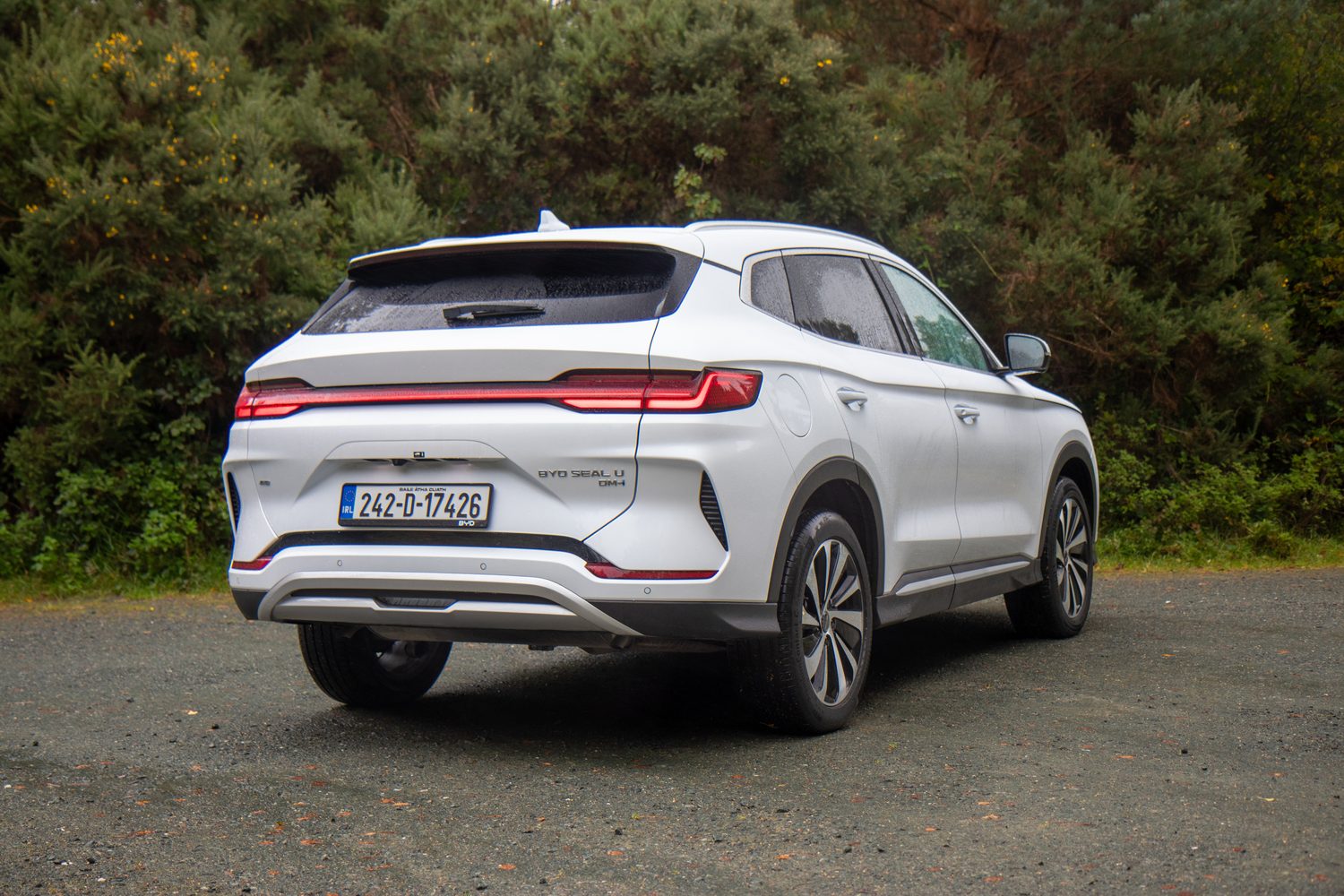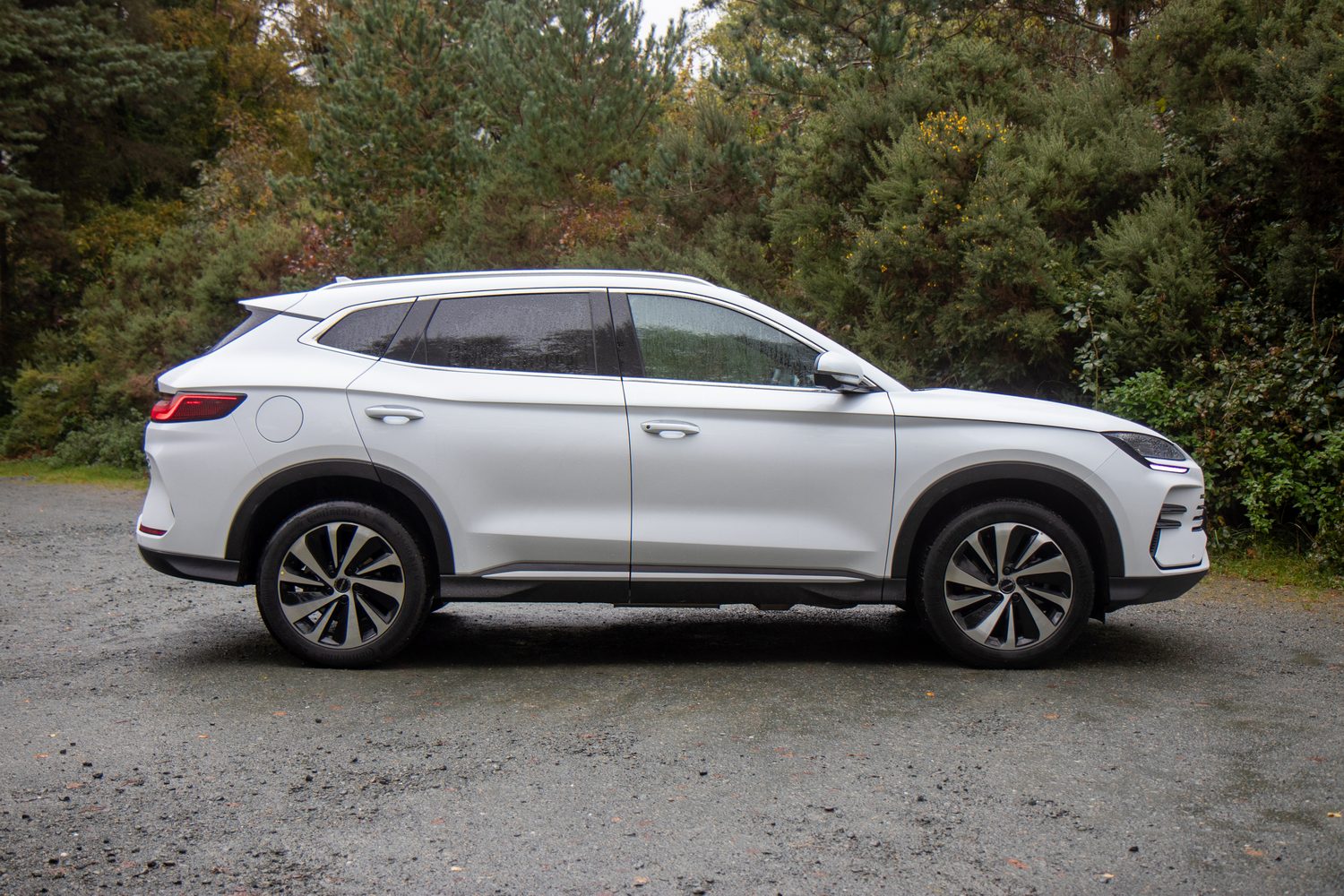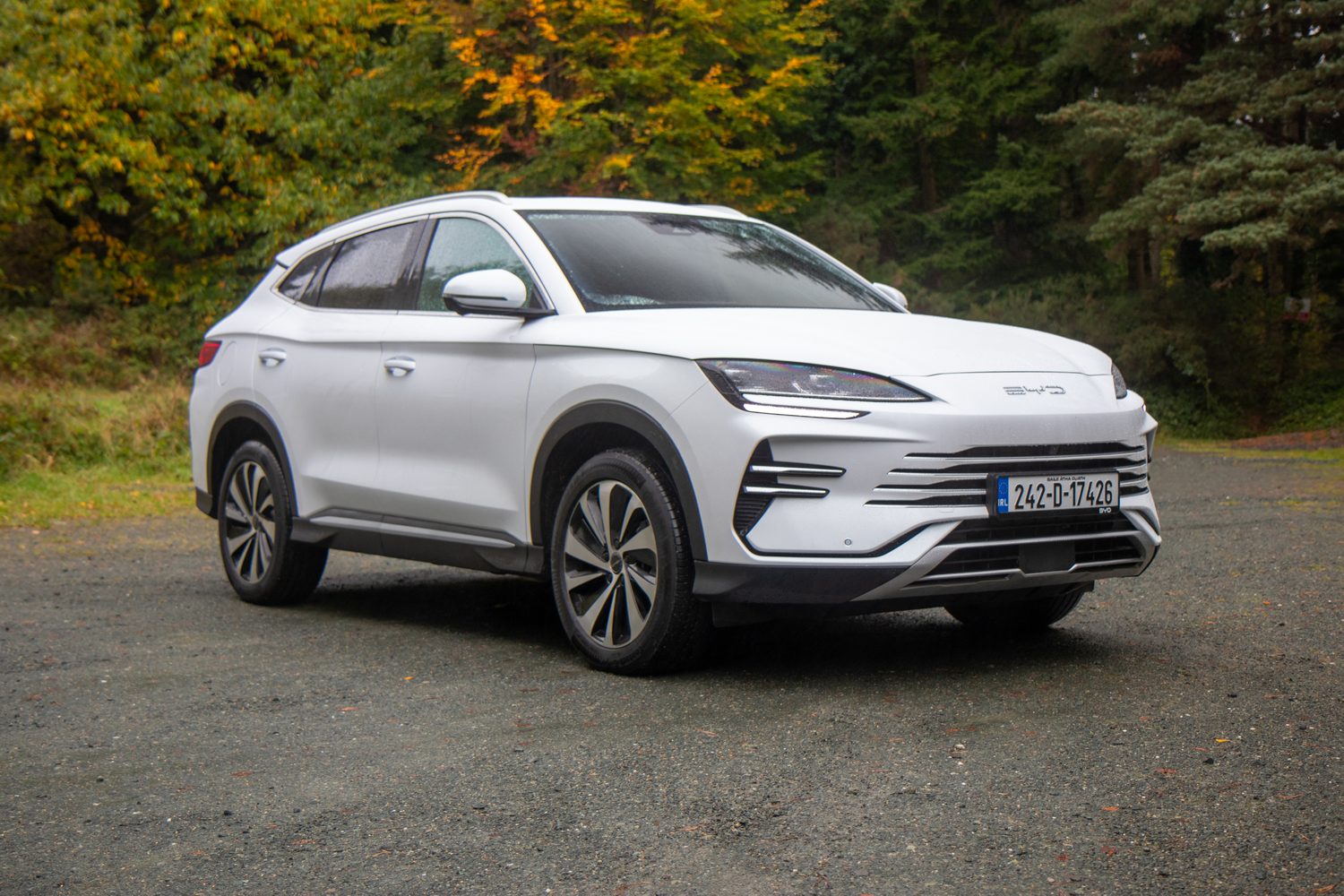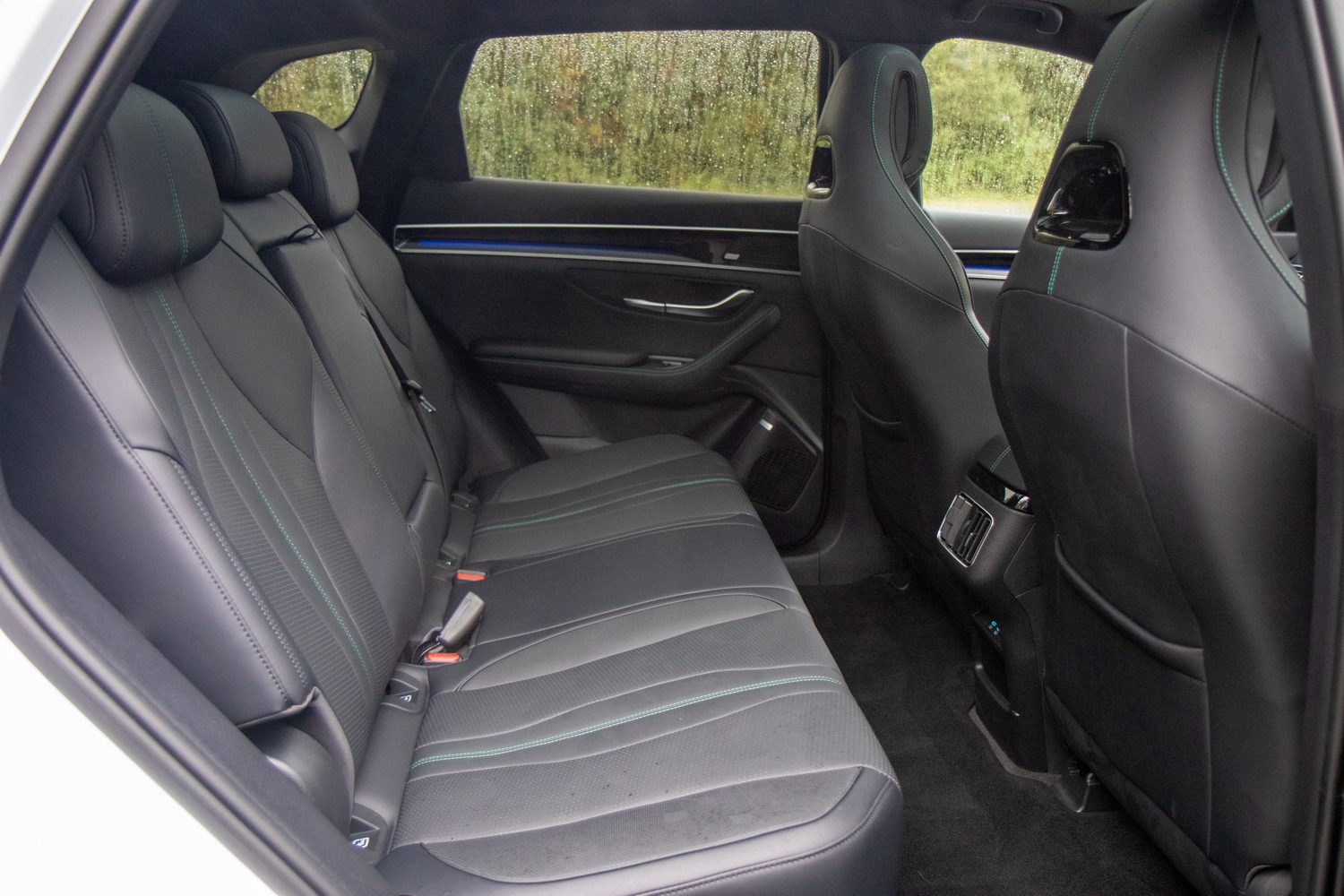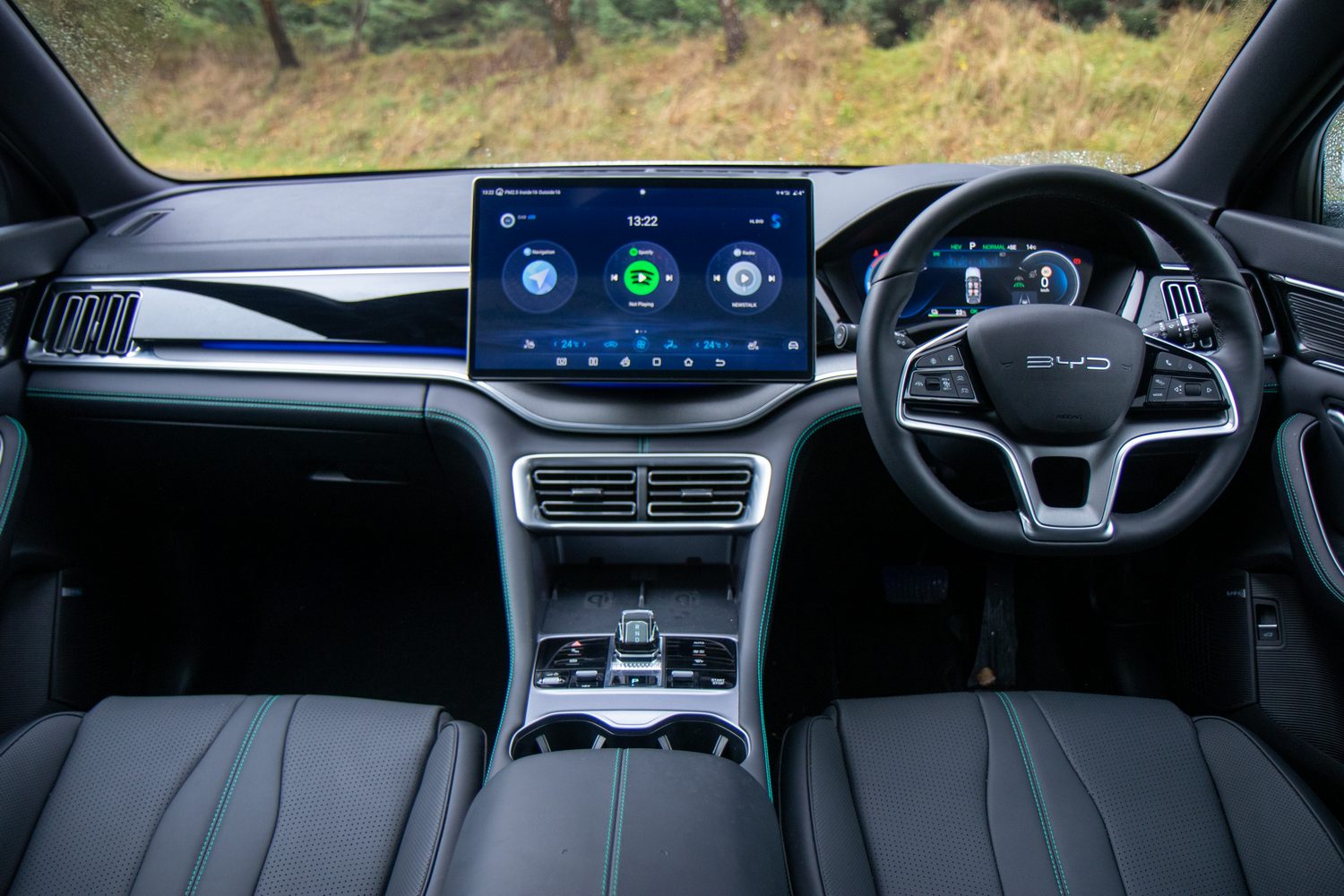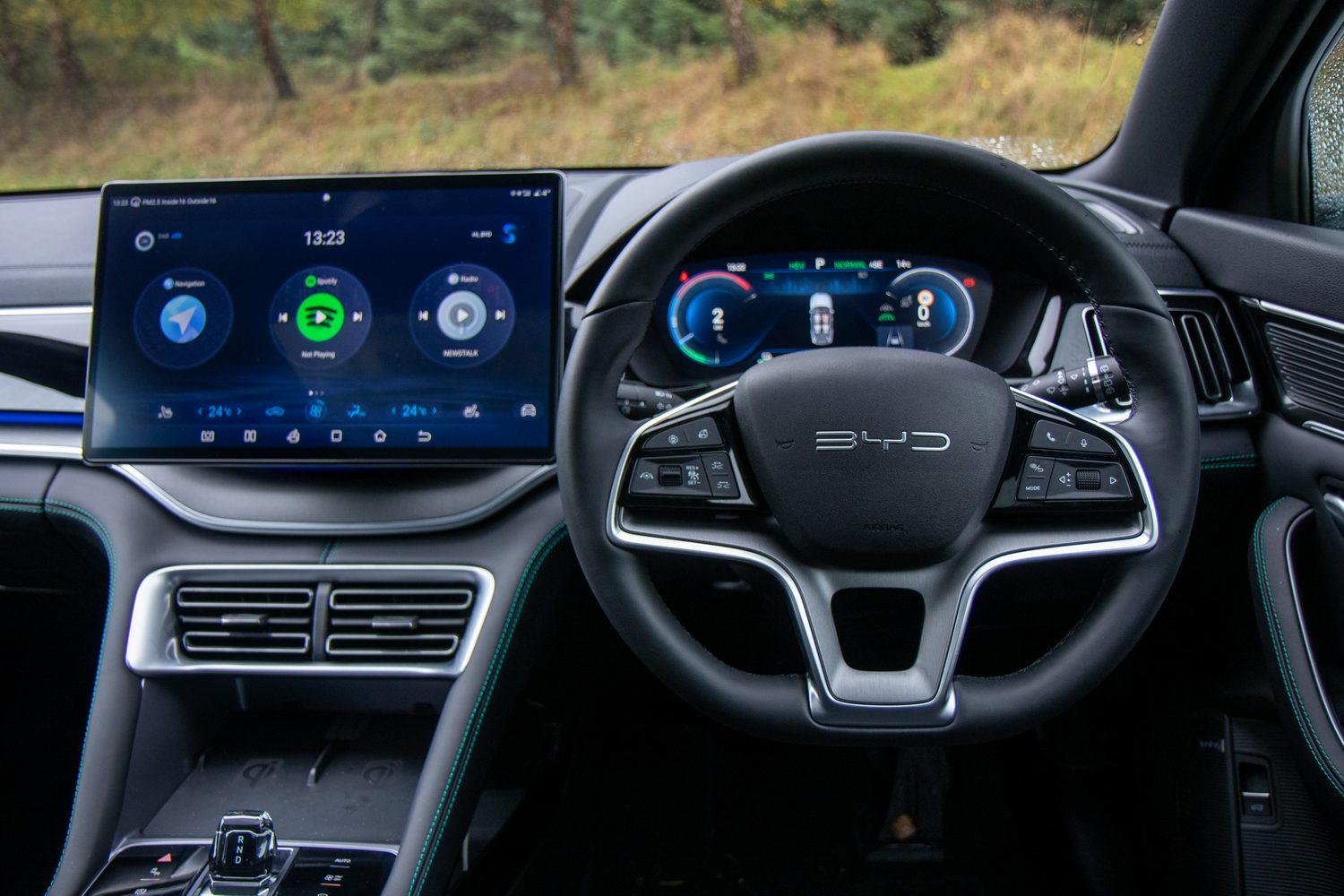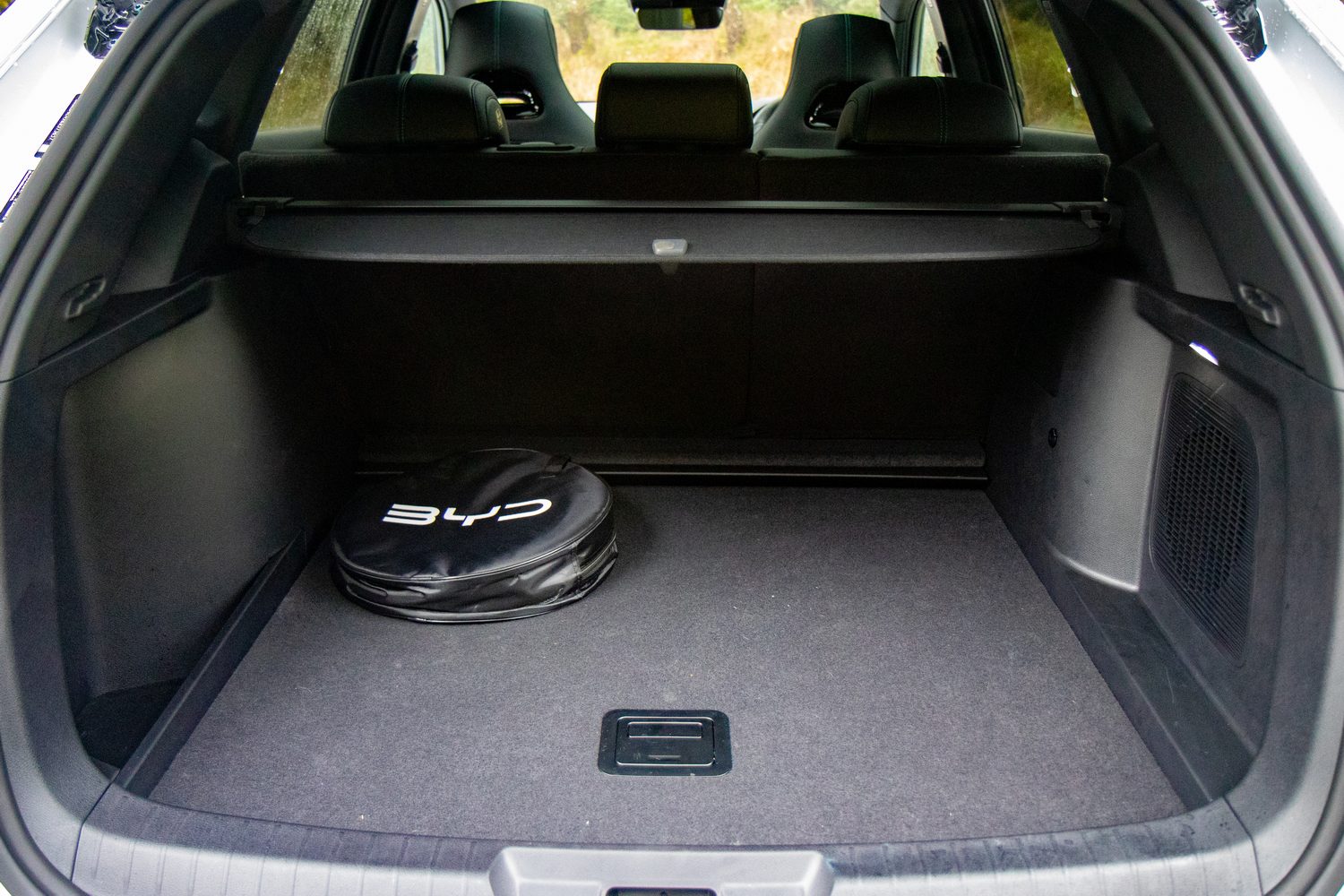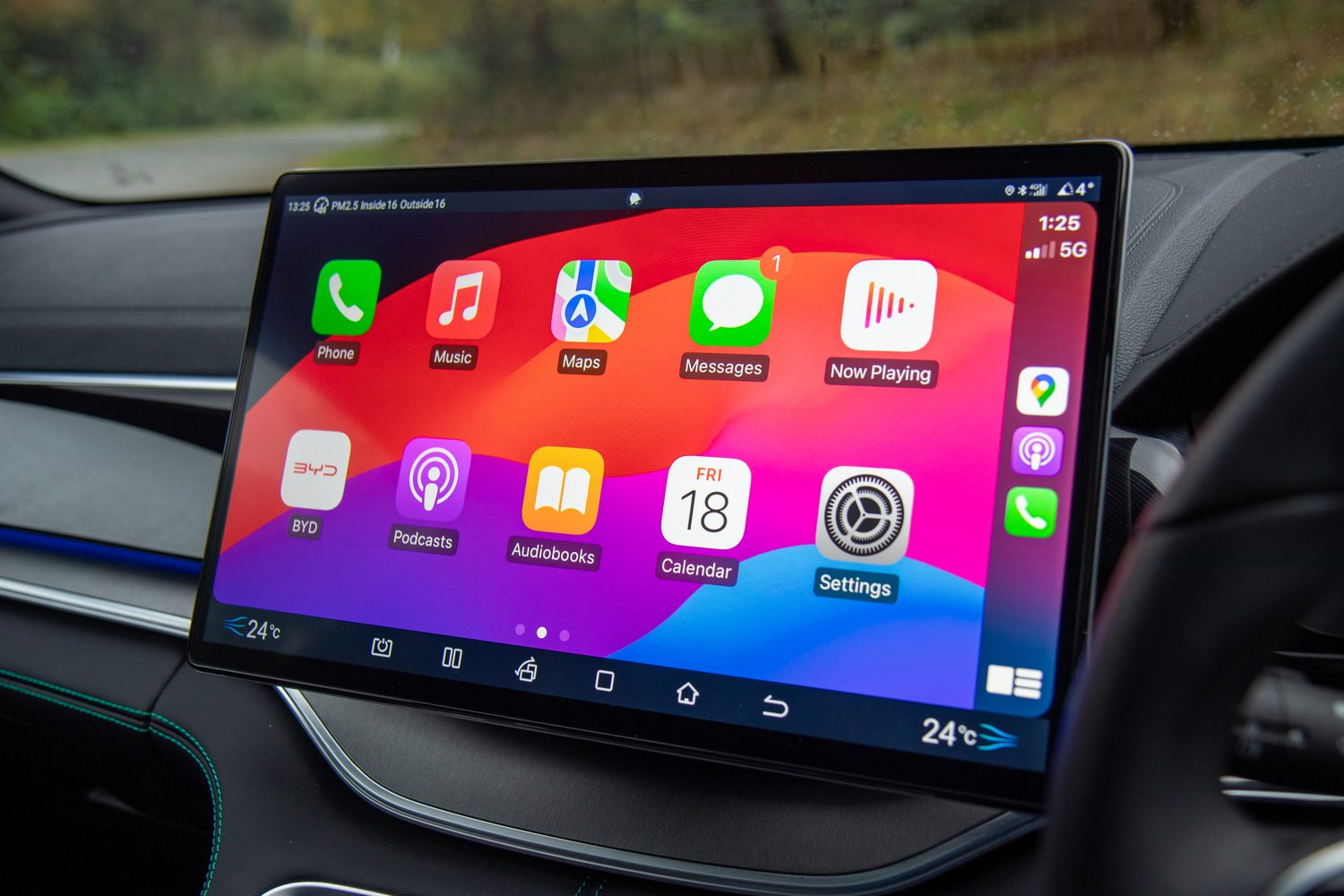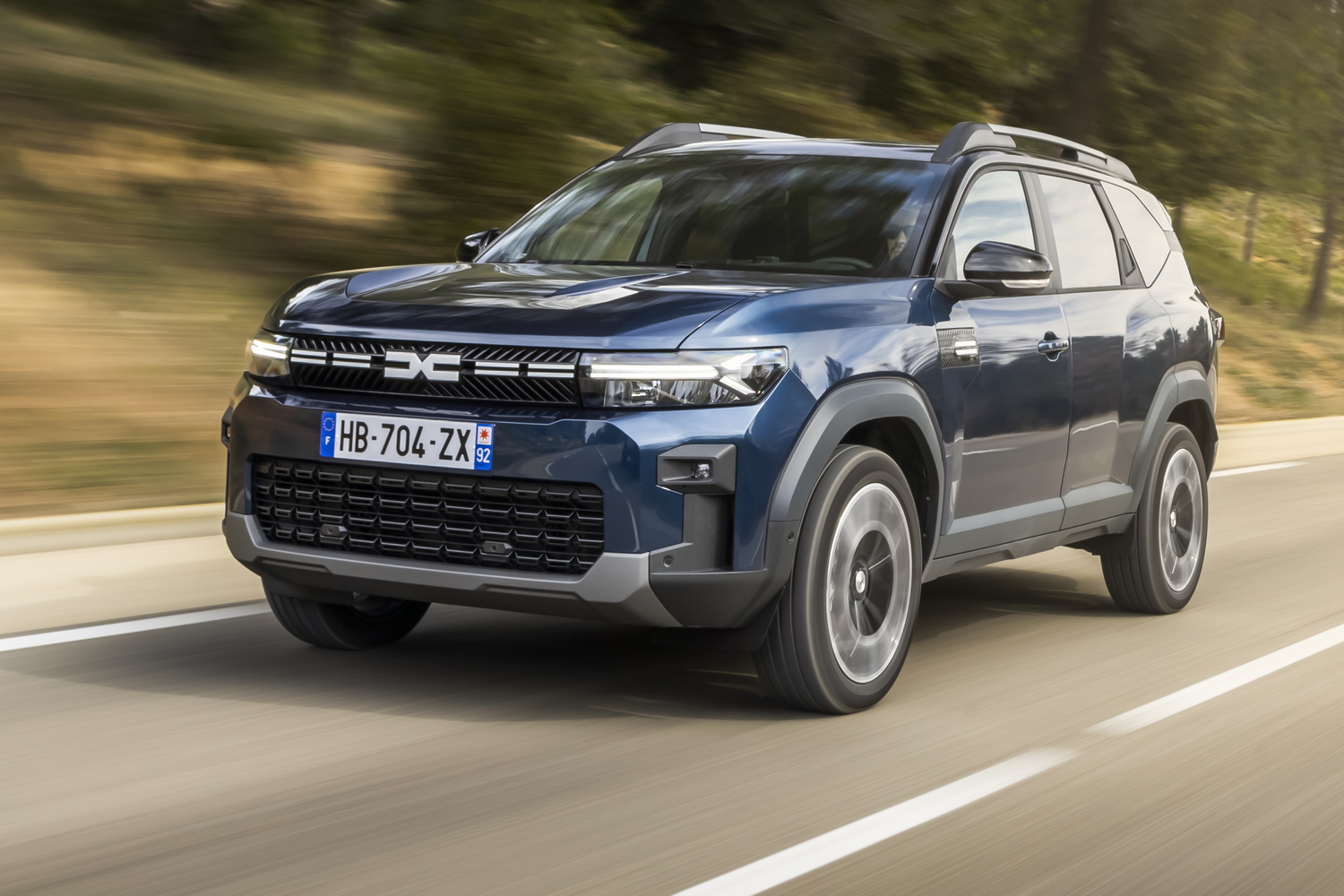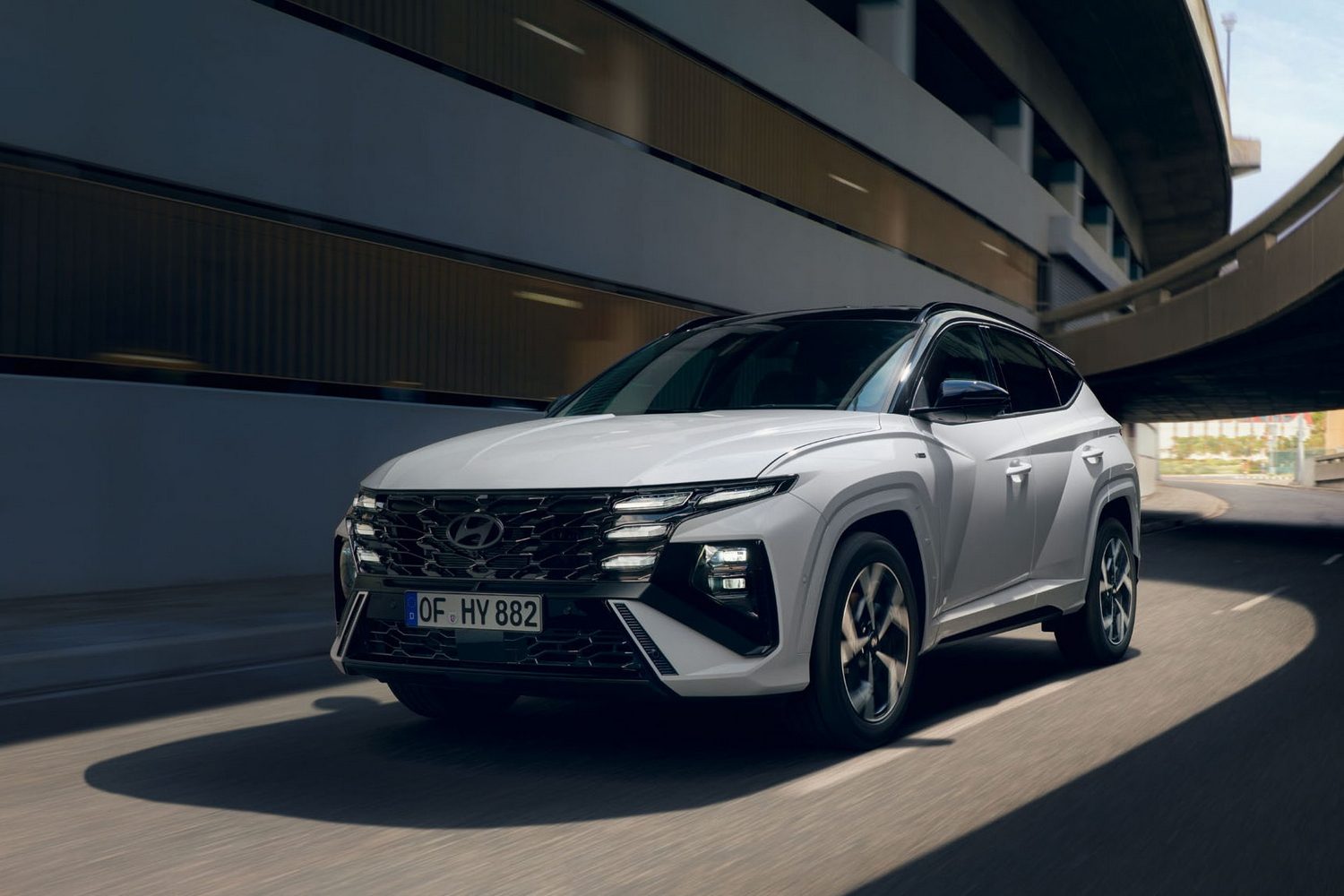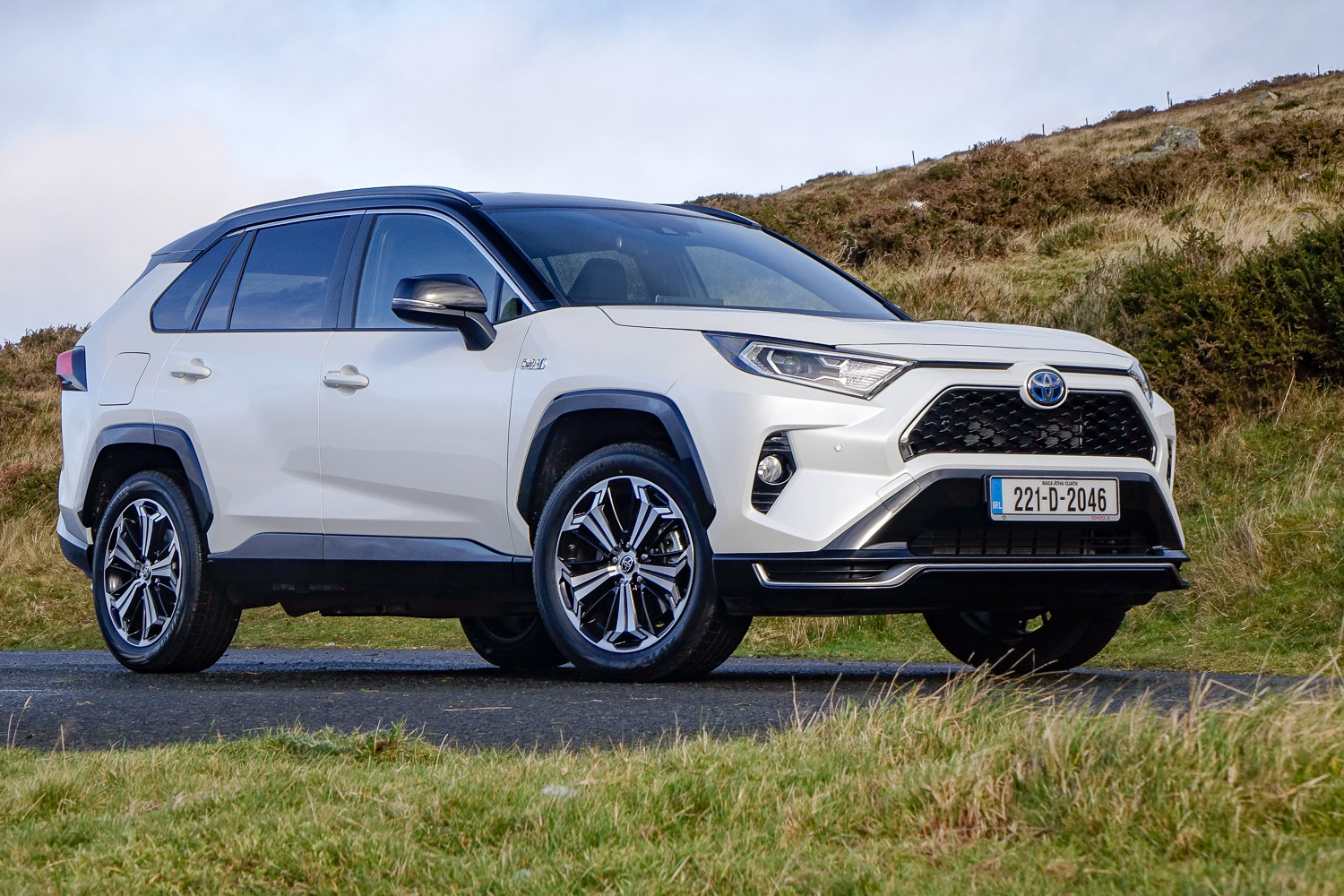Introduction to the 2025 BYD Seal U DMI
While electric cars nab all the headlines, the reality of the Irish and European car markets right now is that consumers are keener on hybrid and, increasingly, plug-in hybrid models. Plug-in hybrids, once derided by critics as 'fake electric cars' have come of age recently as improvements in battery and charging tech has made them more versatile, more capable of longer electric-only mileage and more economical on a long journey when running in hybrid mode.
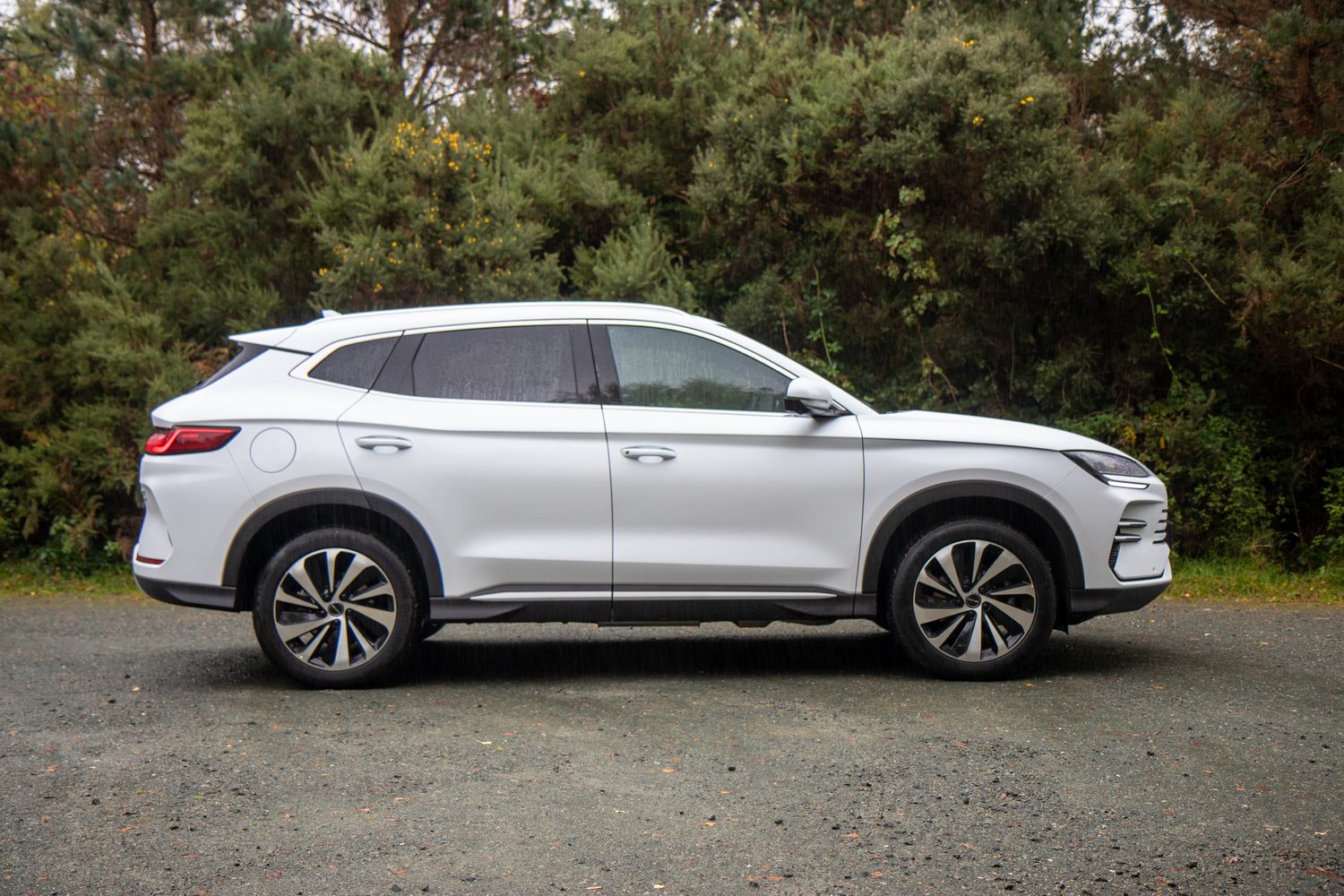
While the big Chinese car makers have arrived in Ireland in a blaze of all-battery EV publicity, none more so than gigantic BYD, those same companies are increasingly now turning to plug-in hybrids both to satiate European customers' desires and also to handily sidestep the EU's extra tariffs applied to Chinese EVs. If it's a hybrid, then no extra tariff applies (at the time of writing in any case, and don't get us started on the constantly shifting quicksand of 2025 tariffs...).
So, this Seal U DMI 'Super Hybrid' is a significant car, as it's BYD's first entry into the hybrid market, and it has the likes of Toyota's RAV4 PHEV right in its crosshairs. You can by an arrestingly affordable basic version of the Seal U DMI (that stands for Dual Mode Intelligent) with front-wheel drive, 217hp and an 80km range but the one on this page is the top-spec 'Design' version with two electric motors to complement its turbocharged 1.5-litre petrol engine, 323hp and a shorter all-electric range of 70km.
All versions get the same high-quality cabin, which has loads of room for heads and legs in both front and rear and notably comfortable seats, but it does suffer from what we might call Chinese Big Car Small Boot Syndrome. The Chinese market still prioritises rear seat space over cargo volume, and so you have a big, roomy SUV such as this which can only hold 40 litres more luggage than a Skoda Fabia hatchback.
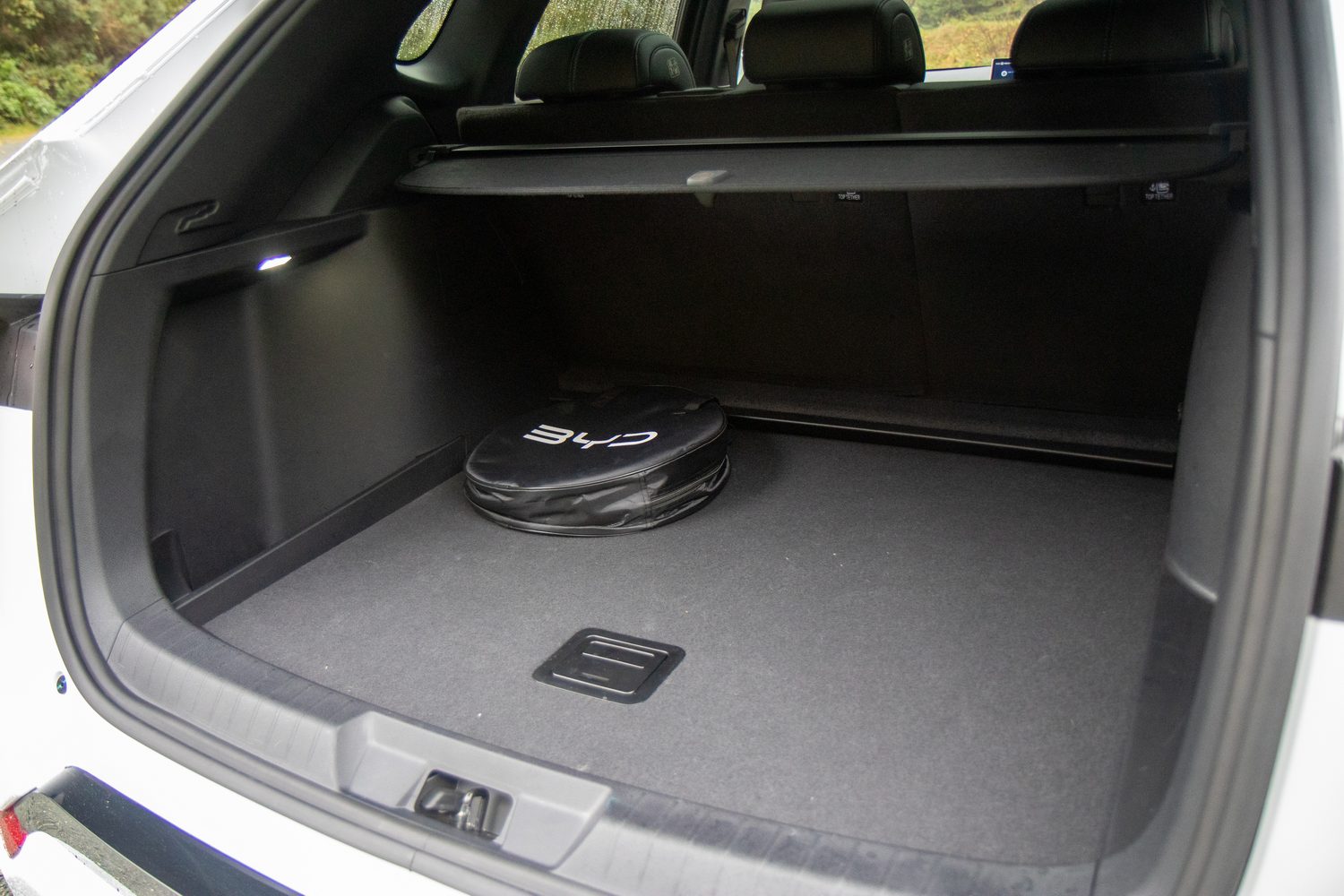
The big rotating touchscreen remains something of a gimmick, but the software on it is pretty decent, even if some of the menus run a little too deep for convenience. The new multi-touch three-finger swipe action that allows you to easily change the cabin temperature from any screen is handy, though.
Those are the static qualities, but how does the Seal U DMI cope with Irish roads, and does it live up to its 'Super Hybrid' billing?
Pros & Cons of the 2025 BYD Seal U DMI

Pros: Well priced, decent economy and electric range, good quality, cabin space
Cons: Small boot, wallows in corners
Irish Pricing & Rivals of the 2025 BYD Seal U DMI
• From €42,150, which is significantly cheaper than many
• Three trim levels and a big battery option
• Only comes with five seats
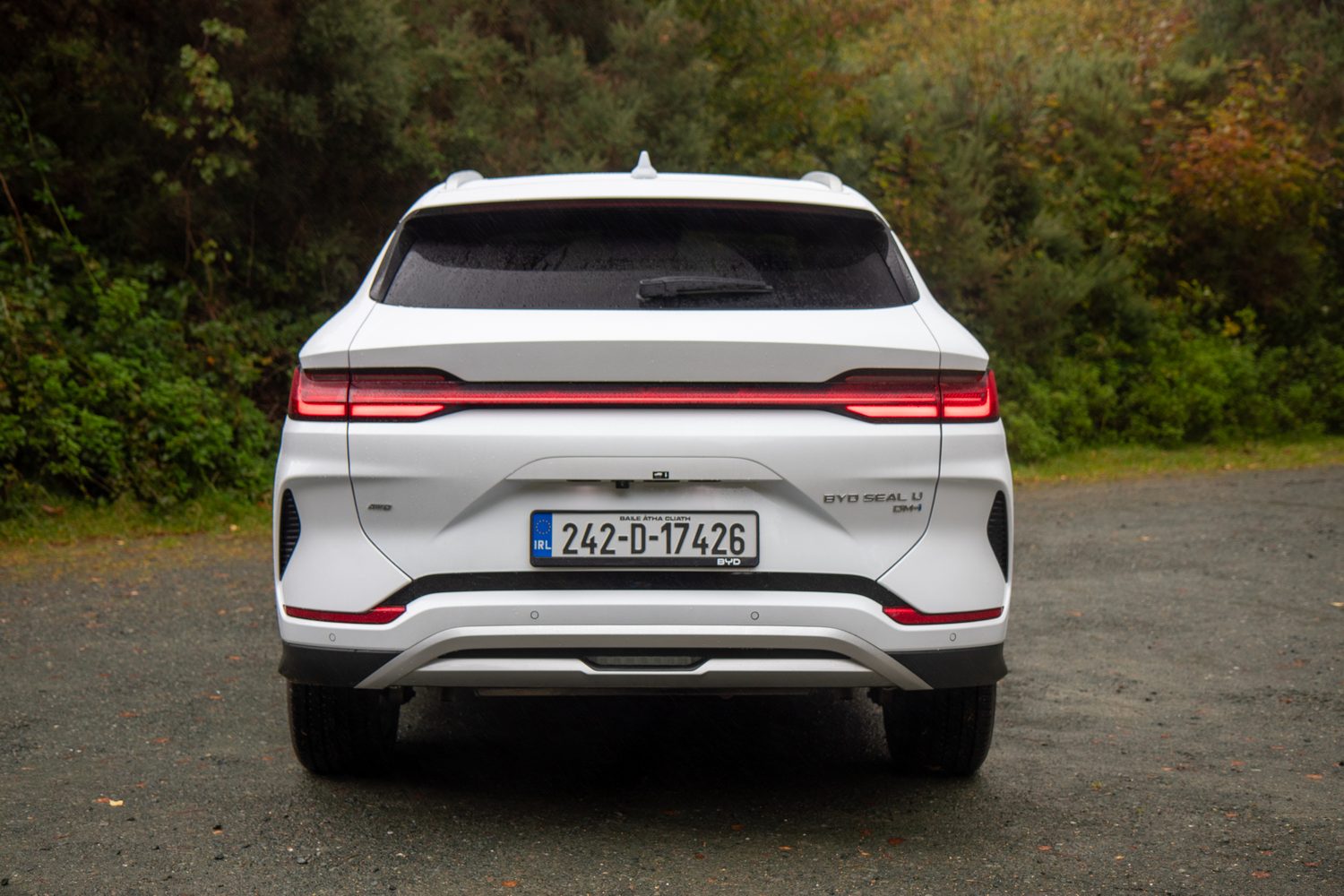
As you'd expect of a BYD, the Seal U comes well equipped as standard, with an impressive base price of €42,150 for the Boost model.
Standard equipment includes LED headlights with high-beam assist, a panoramic glass sunroof, 19-inch alloys, an electric tailgate, synthetic leather seats and trim, heated steering wheel and seats, ventilated front seats, ambient cabin lighting, 12.3-inch digital instrument screen, 15.6-inch rotating touchscreen infotainment with Apple CarPlay and Android Auto, a ten-speaker 'Infinity' sound system, head-up display, parking sensors front and rear and a 360-degree camera system, adaptive cruise control, adjustable driving modes and a vehicle-to-load charging system.

Want to upgrade your Seal U to a higher trim level? You can, as there's the option of the €44,465 Comfort version, which gets a bigger 26.6kWh battery and an electric range of 124km - compared to the Boost's 80km. However, beyond that there are no differences in trim - BYD basically sells one highly equipped version of the Seal U, and you just choose the powertrain you want and pay accordingly. Metallic paint is technically standard, but only in one colour - 'Time Grey' - so if you want a different shade, you have to pay €1,100 extra.
Hence, our Design spec test car has all the same equipment, but it gets a two-motor, four-wheel-drive system that deploys 323hp, but it has to make do with the smaller battery and has an official range of 70km on electric power. There is one tiny spec change - the driving mode settings gain Sand and Muddy modes to go with the Eco, Normal, Sport and Snow settings of the Boost and Comfort models.
While the BYD is priced lower than the Toyota RAV4 PHEV, it is undercut in price terms by its Chinese rival, the MG HS, which starts at €40,995 and, even in 299hp range-topping Exclusive form, is only priced at €43,995 while also managing to keep a bigger battery than the BYD and having more electric range.
Performance of the 2025 BYD Seal U DMI on Irish Roads
• Solid performance
• Comfortable ride
• Slack chassis responses
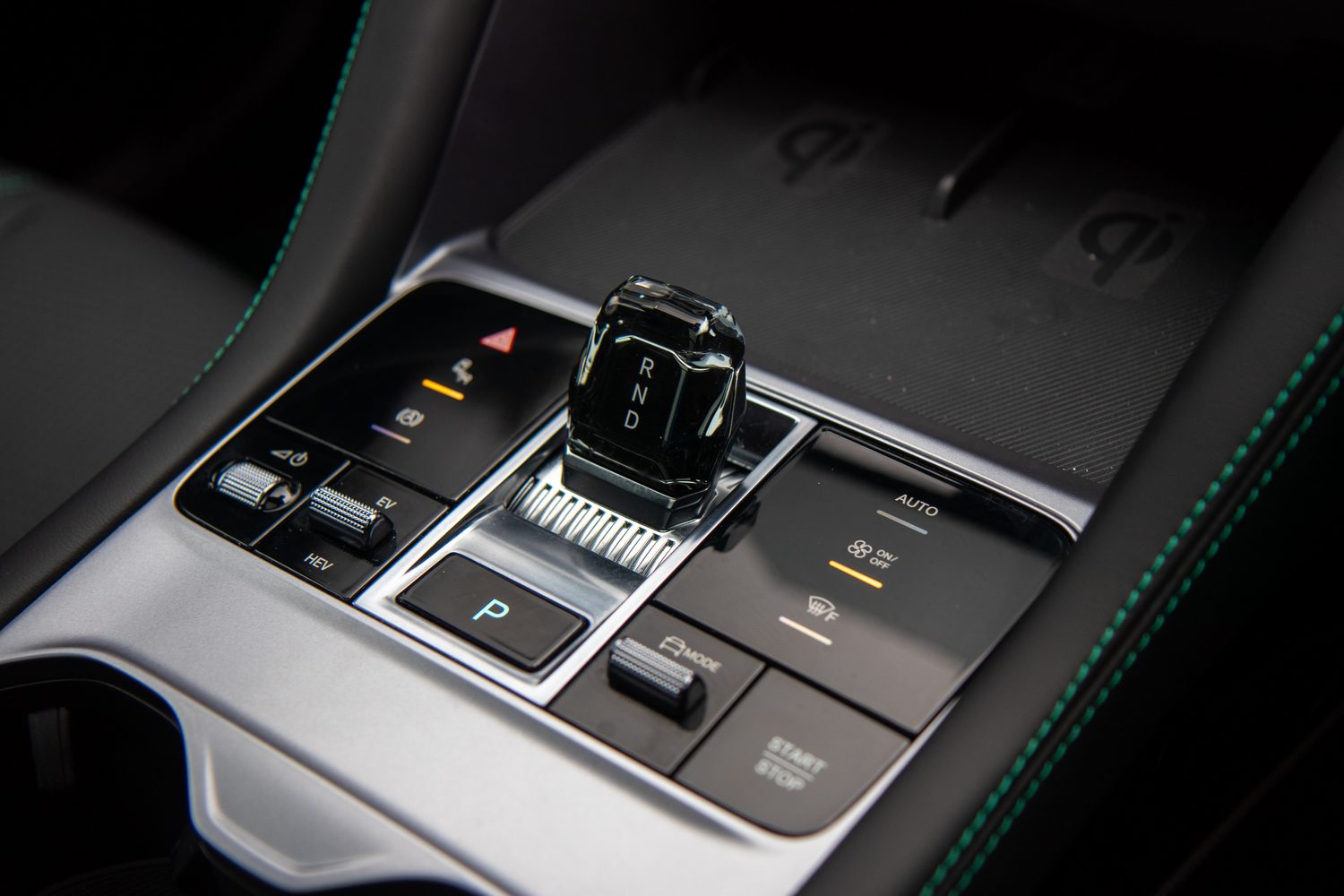
The BYD Seal U isn't a massive car. It's chunky enough, even by SUV standards, but it's a five-seater and is therefore closer to the likes of the RAV4 and the Hyundai Tucson than any of the big seven-seat plug-in hybrids on offer. Which is why it's slightly odd that it then has the chassis and steering responses of a much bigger car.
In terms of outright performance, the Seal U in 323hp, four-wheel-drive, Design form, does pretty well. The 5.9-second 0-100km/h time looks impressive on paper, but to achieve it you need to rev the little 1.5-litre engine until its valves bounce, so it's not something you'll probably do much of the time. The Seal U's automatic transmission essentially uses the twin electric motors to give the car infinite gearing, and while it's not like a Nissan e-Power hybrid, in that here the petrol engine does and can drive the front wheels directly, it is heading in the e-Power direction in that the electric motors do most of the work, certainly at low-to-medium speeds.
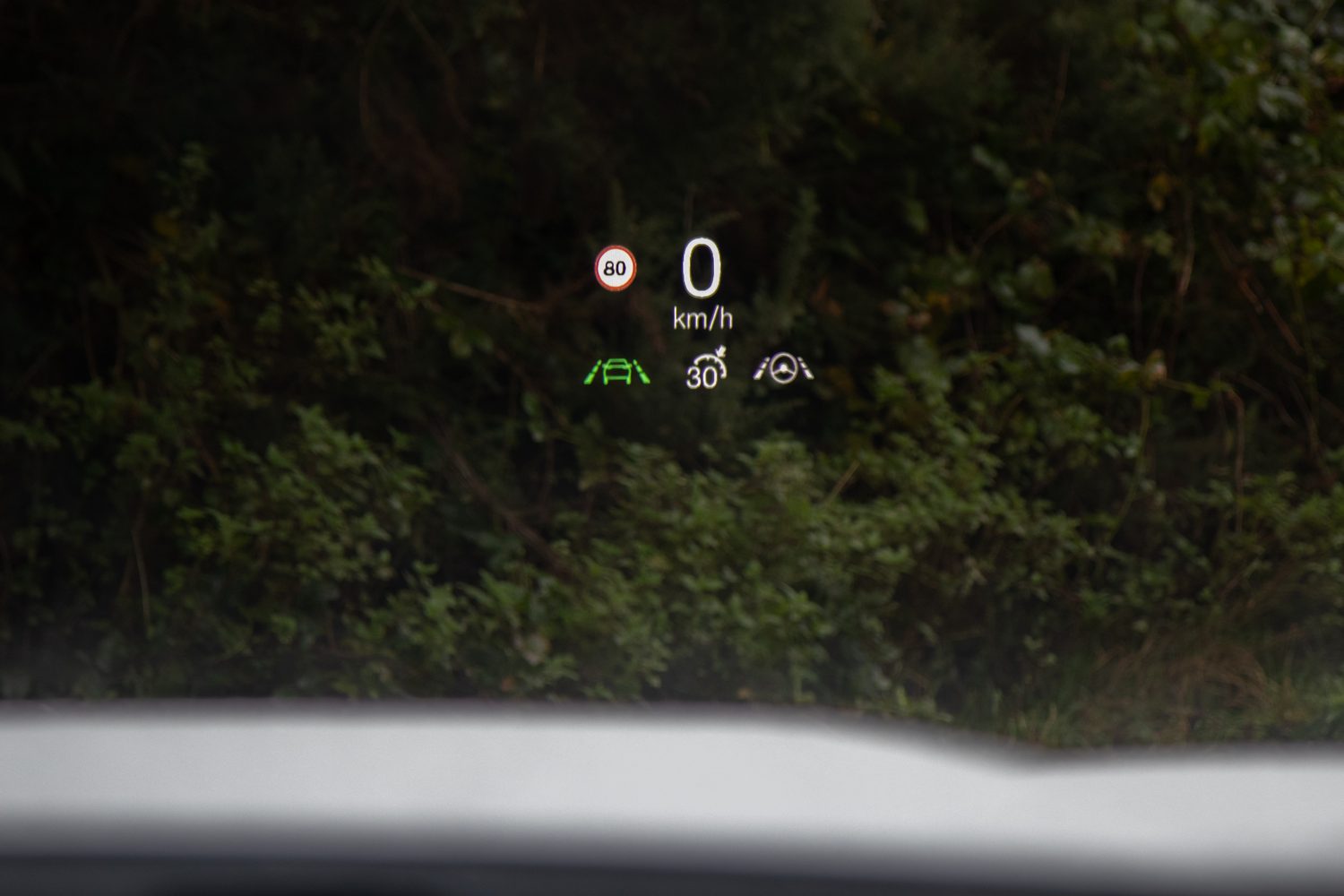
When it's running in electric mode, the Seal U is impressively quiet and smooth, but once the petrol engine kicks in there's a constant low drone that enters the cabin at pretty much every operating speed. It can be easily enough drowned out by the stereo, but it becomes irritating if you're just trying to drive in a bit of silence.
The Seal U's suspension is very soft, which is great when you're driving around town, as for the most part it glides nicely over bumps, but it's much less good on the open road, as the suspension wallows around corners, and the steering is far too light and disconnected. In this respect, the Seal U is well and truly beaten by even the near-retirement RAV4, and the MG HS has much sharper steering and a better overall chassis balance.
Running Costs of the 2025 BYD Seal U DMI
• Lots of charging needed for it to make sense
• Decent long-range fuel consumption
• Six-year, 150,000km warranty
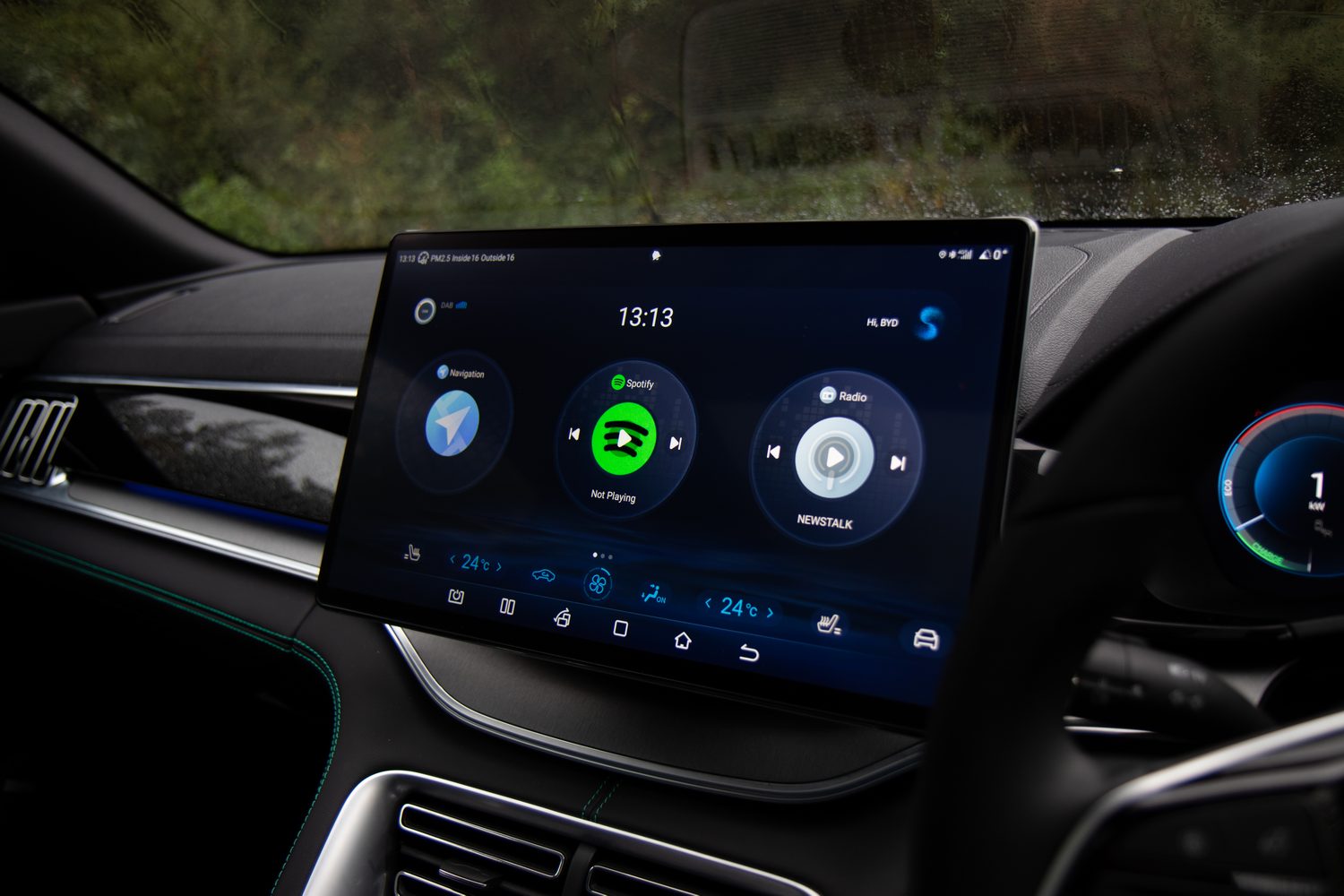
Because it has the smaller battery and the highest weight, this Design version of the Seal U therefore has the shortest electric range, at 70km compared to the 80km of the Boost version and the 124km of the big-battery Comfort model. Around 50km should be useable in daily driving, which is OK, even if it's nothing special.
Helpfully, the 'Blade' lithium-iron-phosphate (LFP) battery charges at up to 11kW, which is fairly quick by plug-in hybrid standards, although unlike some key rivals - such as the Skoda Kodiaq - you can't fast-charge it on DC power. With that relatively short real-world range of around 50-55km, you'll have to charge it up a lot to make the most of its electric capability, so you'll need access to a home charger, and preferably a work one too if you're a commuter.
Officially, the Seal U uses 1.2 litres per 100km on the WLTP test, but this is of course rubbish - the test favours plug-in hybrids to a frankly ridiculous effect. Thankfully, BYD is aware of that, and it also issues a 'weighted' fuel economy figure, which measures all-round economy assuming you make some long journeys with a flat traction battery, and that comes out at 7.4 litres per 100km which, impressively, is what we observed on our test.
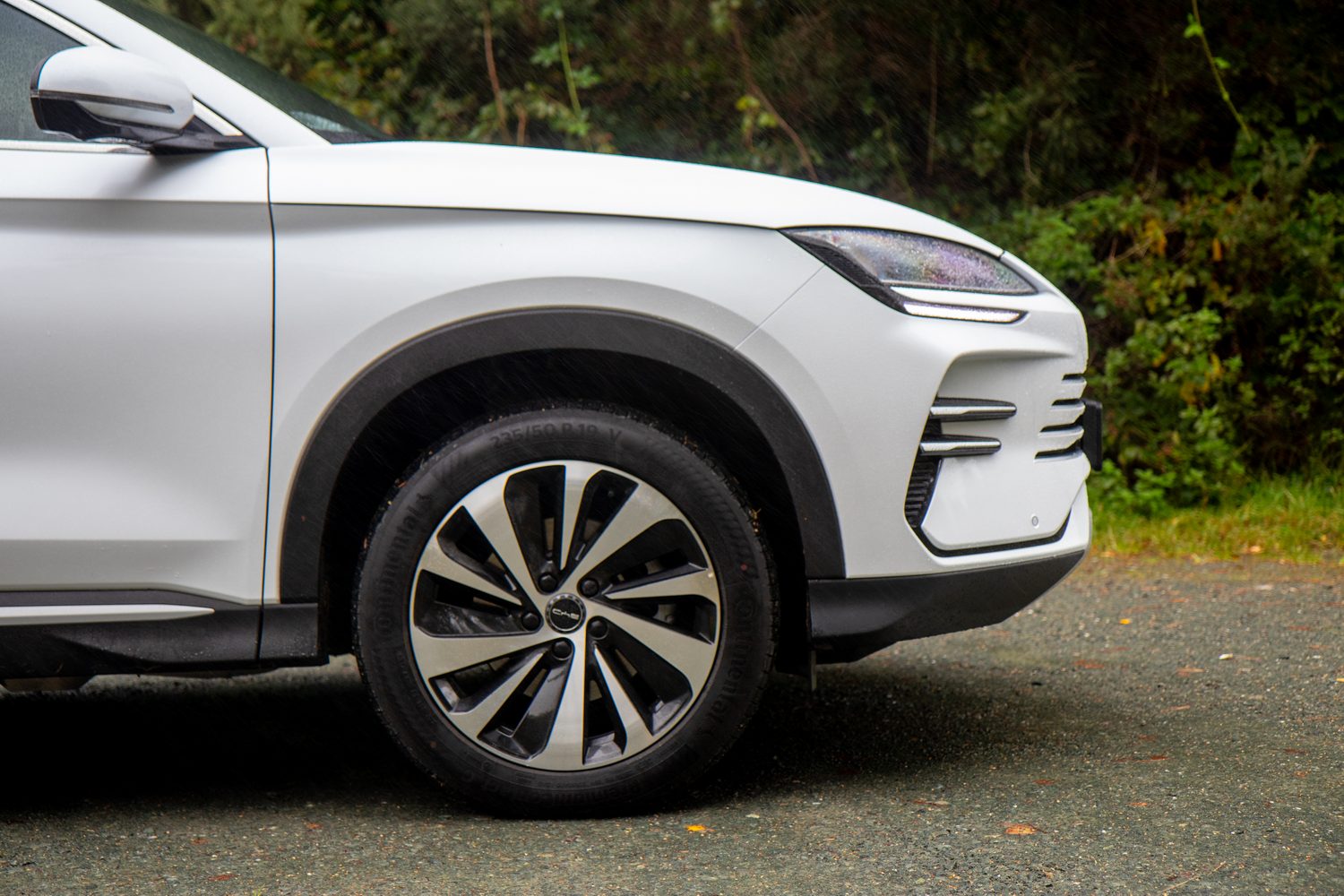
However, that does put the Seal U behind the Toyota RAV4 PHEV, which in spite of being an older design couldn't be abused into delivering anything less than 5.3 litres per 100km on long journeys in our hands.
BYD provides a standard six-year, 150,000km warranty on all of its products, with a separate eight-year, 200,000km warranty for the battery, and another eight-year, 150,000km warranty for the electric motors.
Verdict - Should You Buy the 2025 BYD Seal U DMI?
Yes, but don't buy this one. The extra power doesn't really add much to the Seal U's driving experience, as the chassis and steering just aren't set up to exploit it. You'd be much better off in the slightly more affordable Comfort version with its more useful electric range.

FAQs About the 2025 BYD Seal U DMI
Are BYD Seal U cars any good?
Yes, you can fairly describe the Seal U as 'good.' It's well-made, reasonably priced, well equipped and decently economical.
What is the difference between BYD Seal and Seal U?
They are two entirely different cars. The BYD Seal is an all-electric four-door saloon, designed to compete with the likes of the Tesla Model 3, Polestar 2 and Hyundai Ioniq 6. The Seal U might share an aquatic name, and LFP battery tech, but it's a tall, chunky five-door SUV with plug-in hybrid power.
What is the fuel consumption of BYD Seal U?
Officially, the Seal U Design uses 1.2 litres per 100km, or 235mpg. That's on the official WLTP test, though. In the real world, if you're driving along with a flat main battery, then the Seal U should get around 7.4 litres per 100km.
How safe is the BYD Seal U?
It would seem to be very safe. The Seal U received a full five-star rating from Euro NCAP when it was tested, with an impressive 90 per cent score for adult occupants, 86 per cent for child occupants, 83 per cent for vulnerable road users and 77 per cent for its active safety systems.
Read the full Euro NCAP report here
How many child seats can I fit in the BYD Seal U?
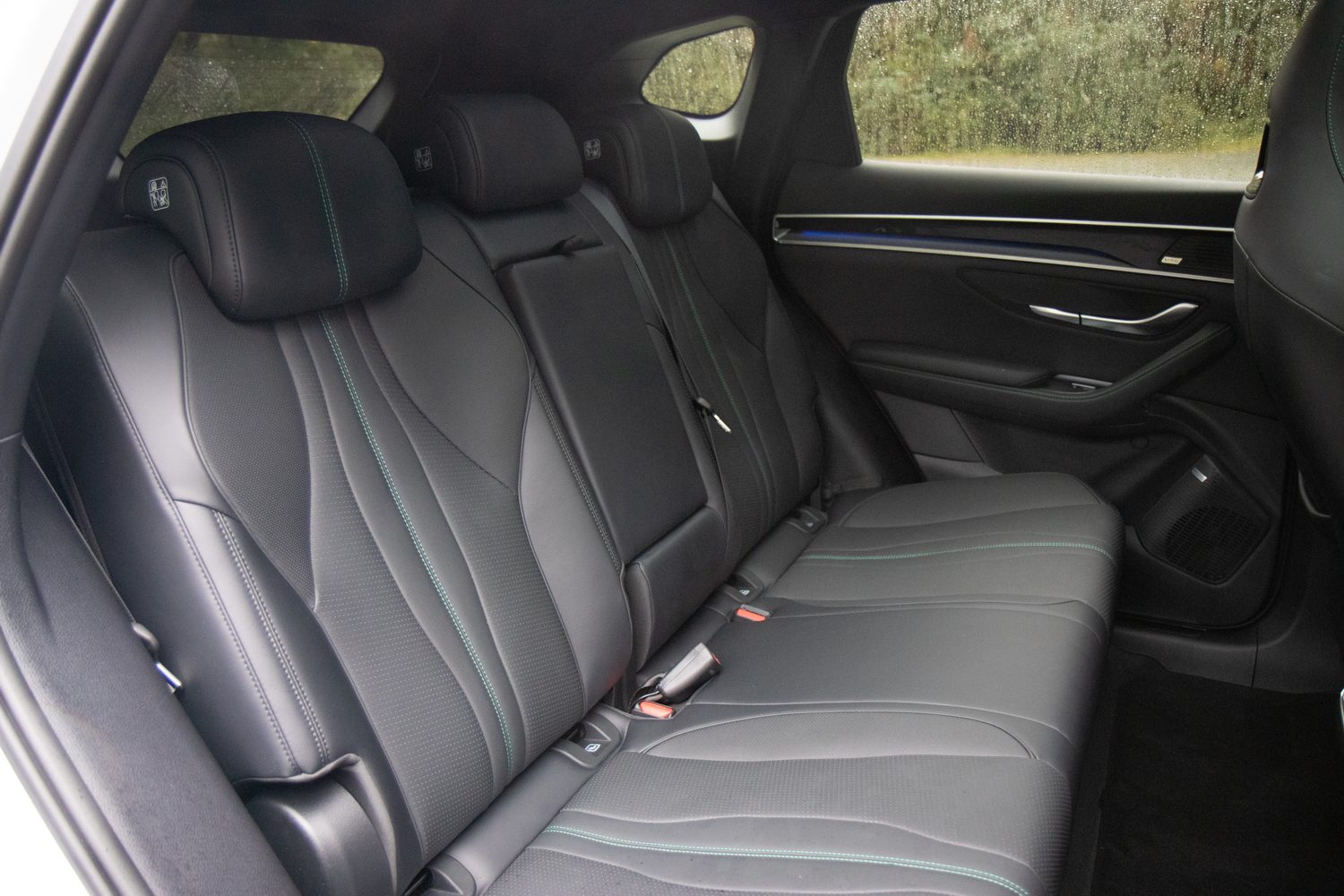
The BYD Seal U comes with ISOFIX points in the outer two rear seats, and in the front passenger seat with an airbag cutoff switch. The centre rear seat is just about wide and flat enough to fit in a booster cushion for a taller child, too.
Want to know more about the BYD Seal U?
If there's anything about the BYD Seal U DMI we've not covered, or you'd like help in choosing between it and other cars, you can avail of our expert advice service via the Ask Us Anything page.

